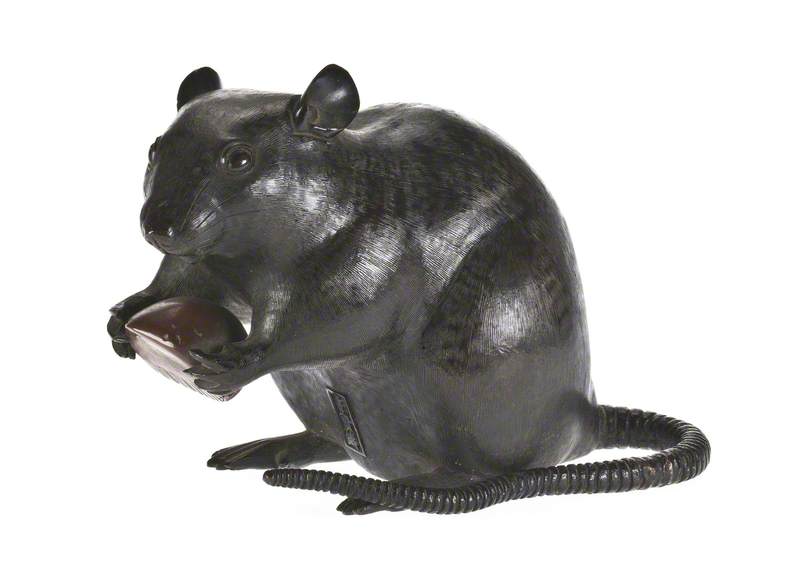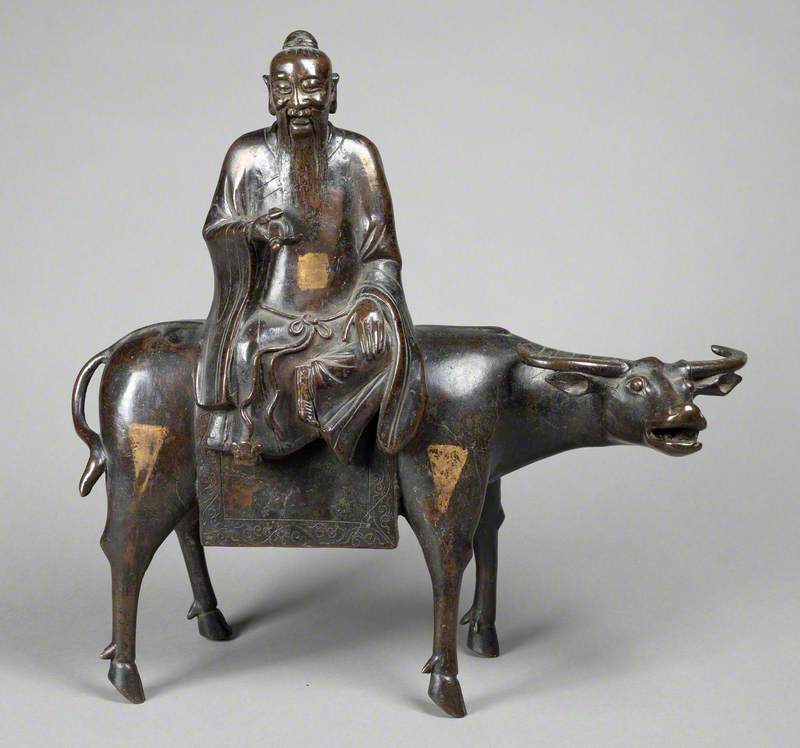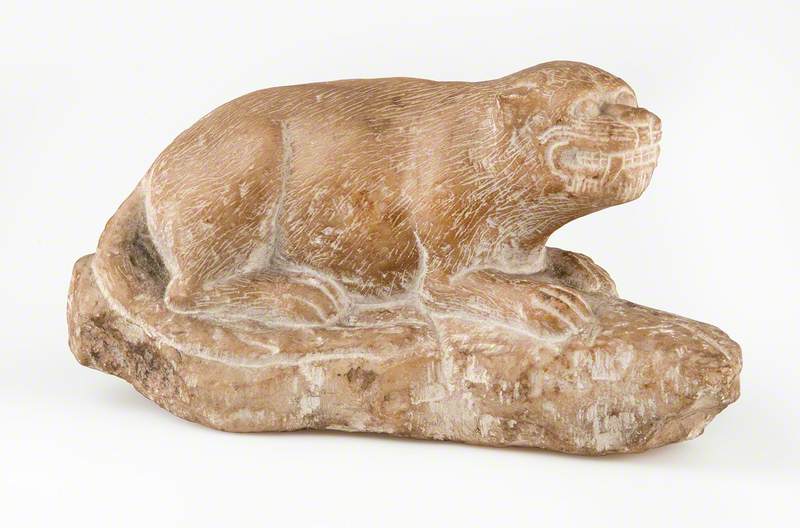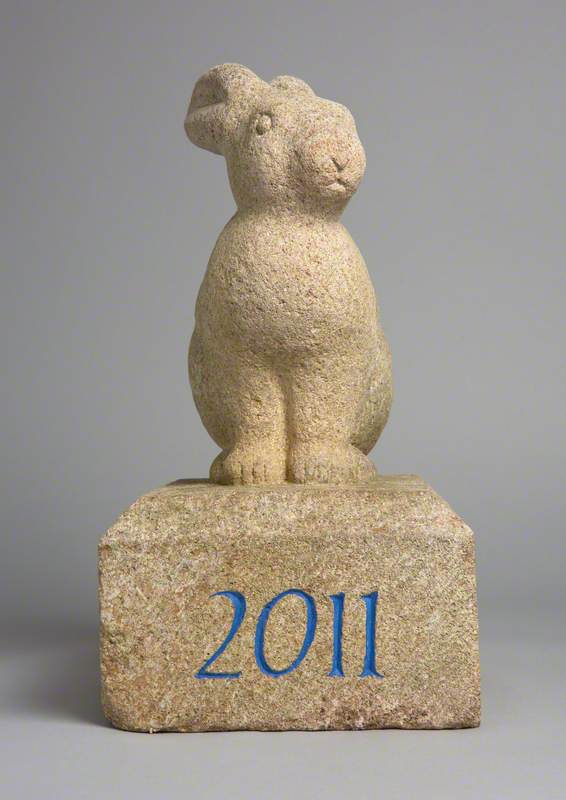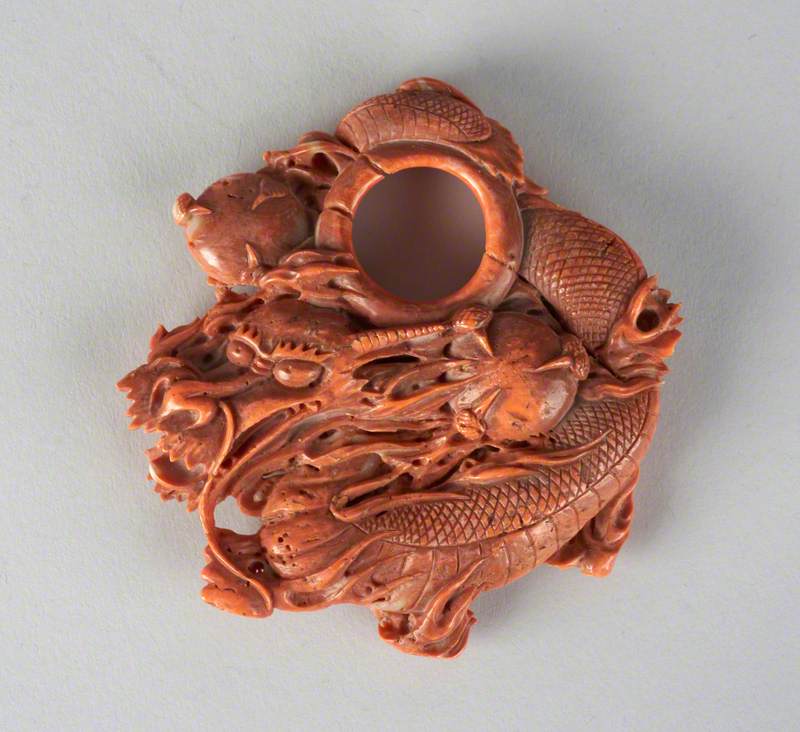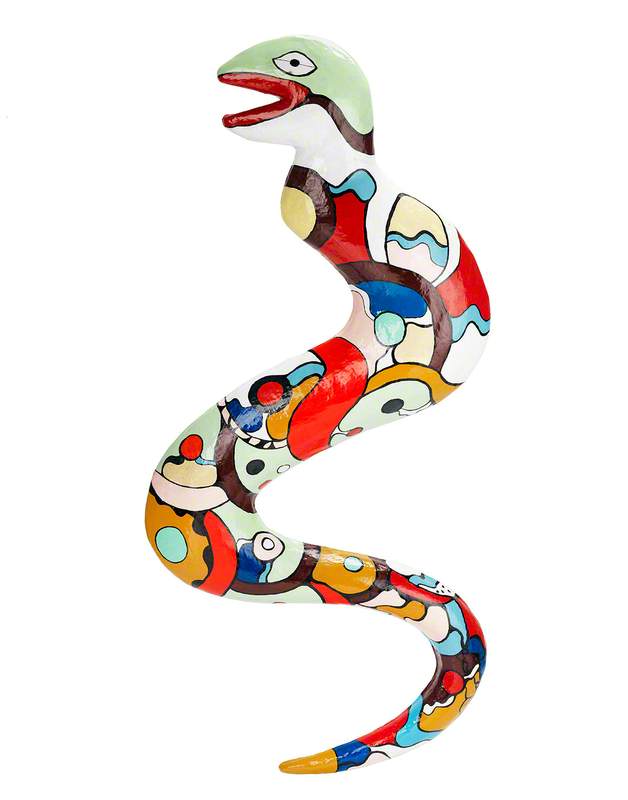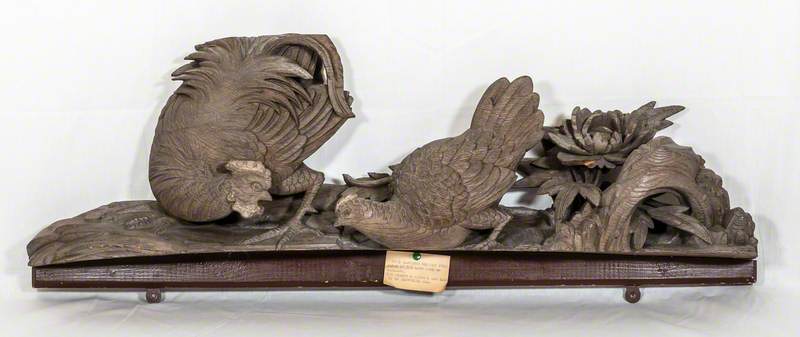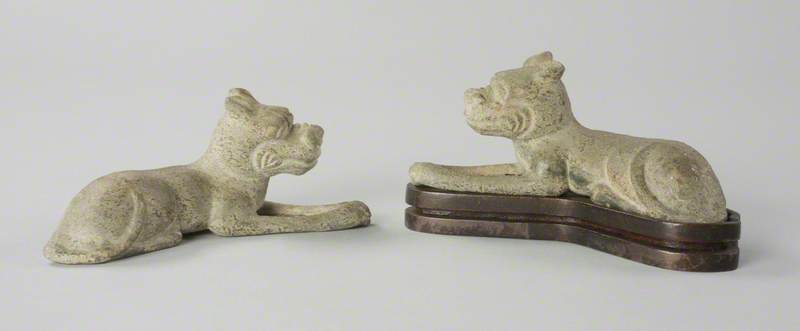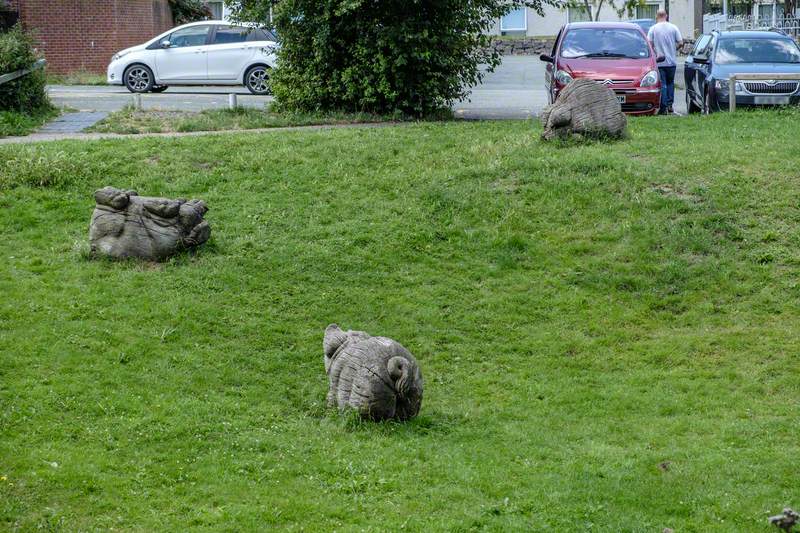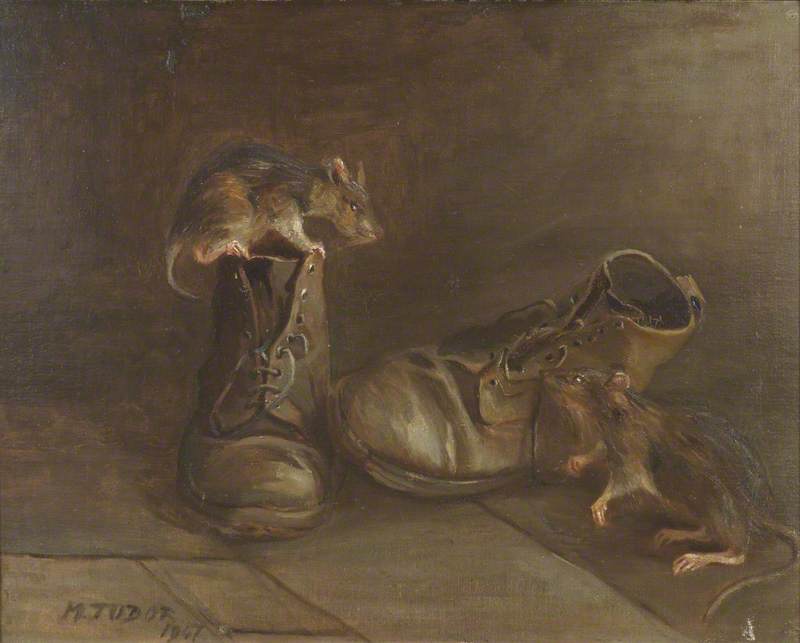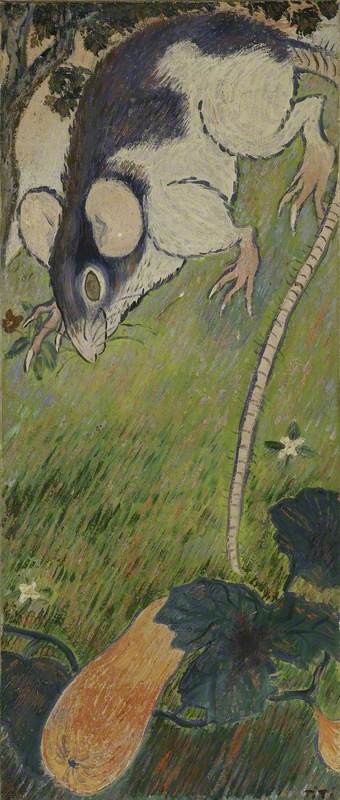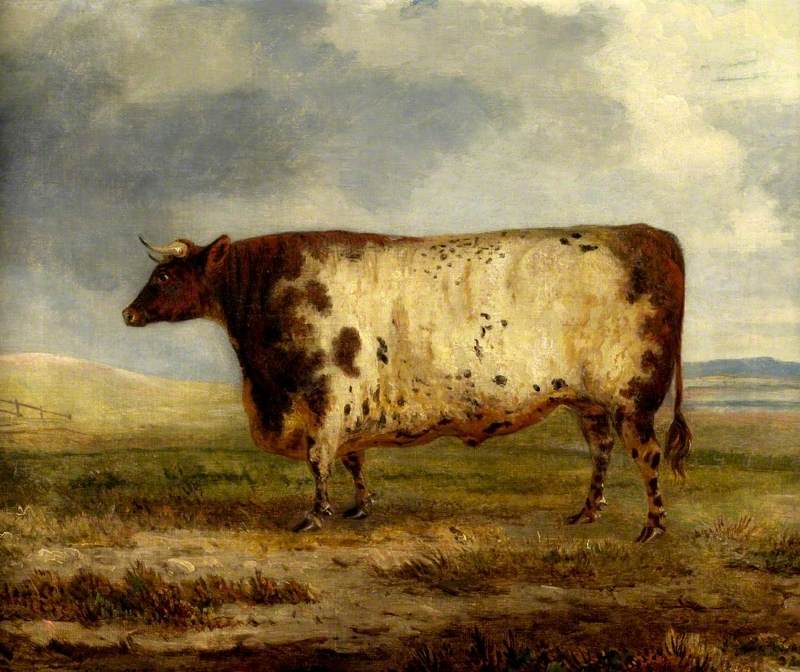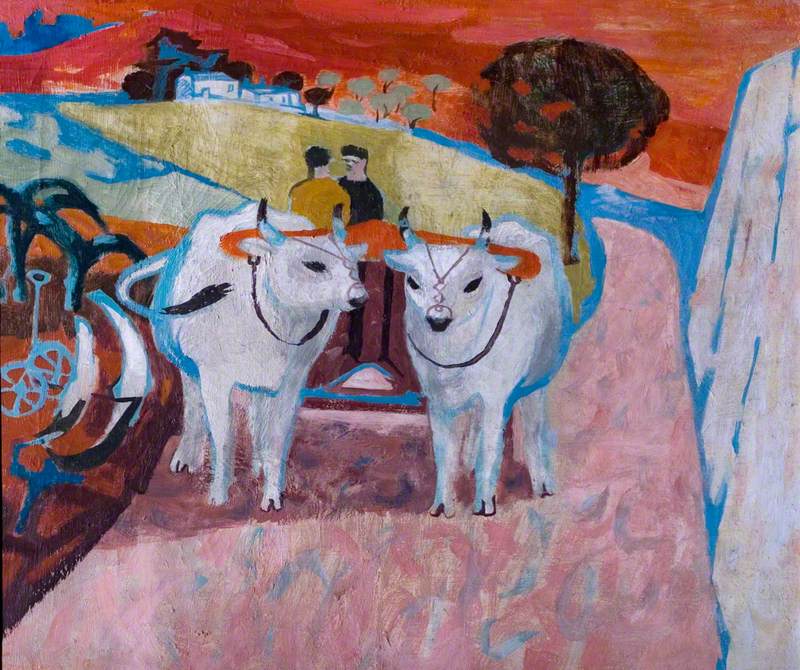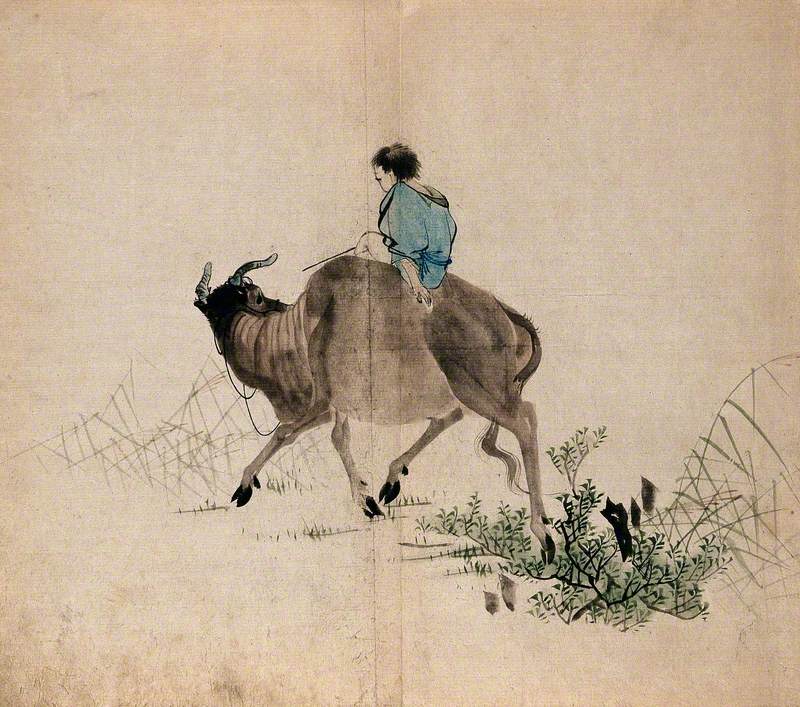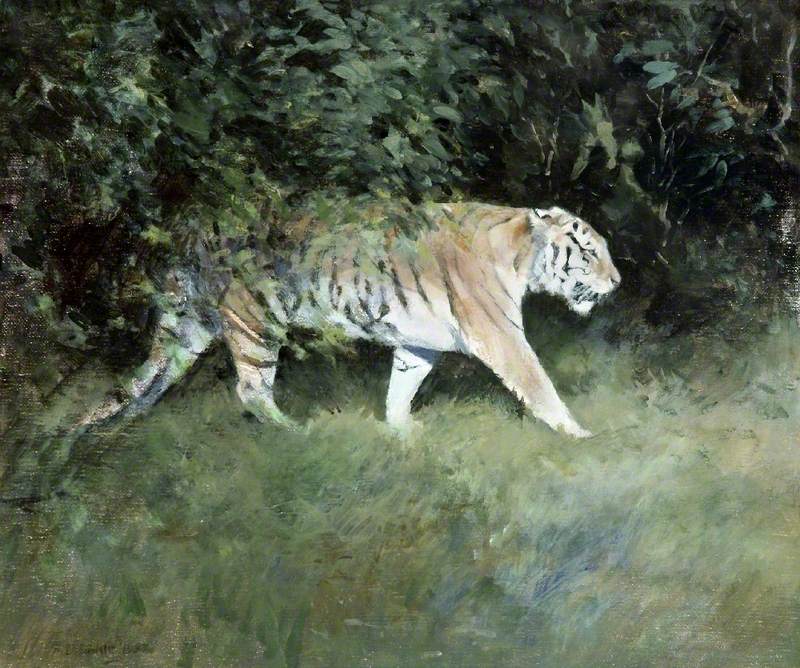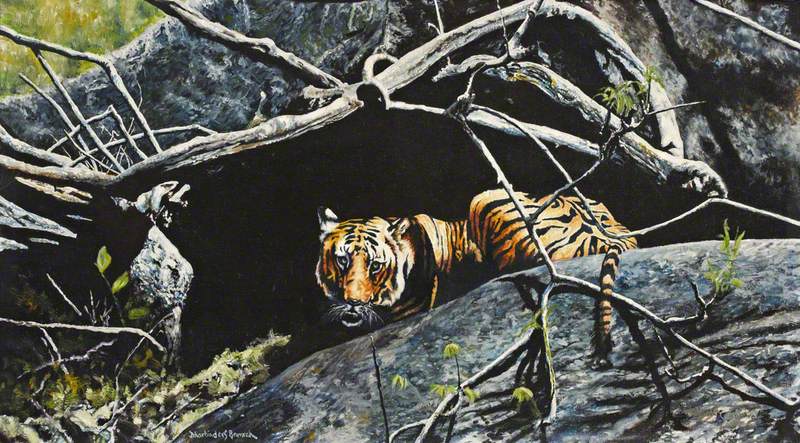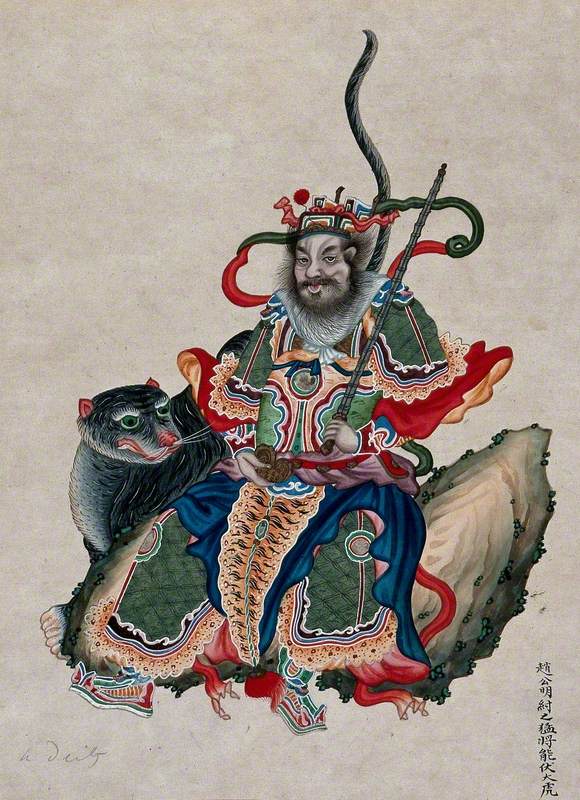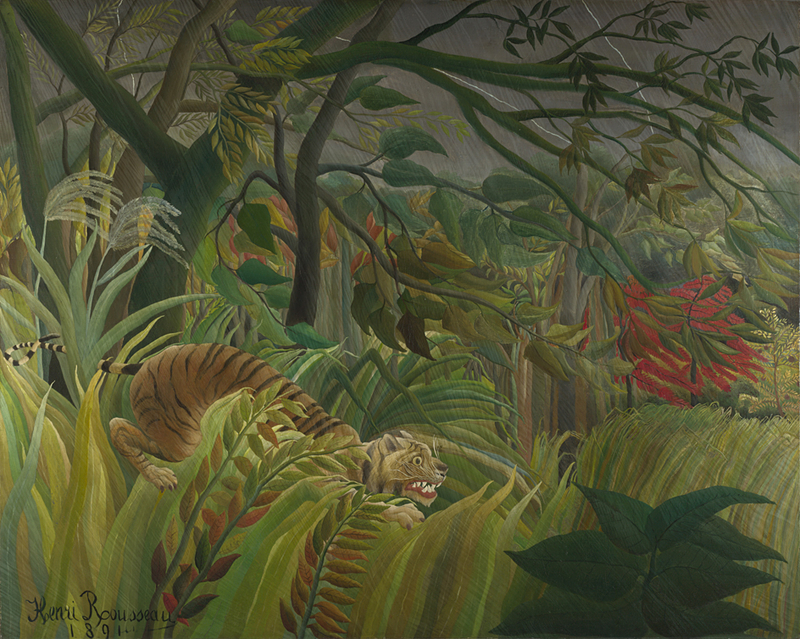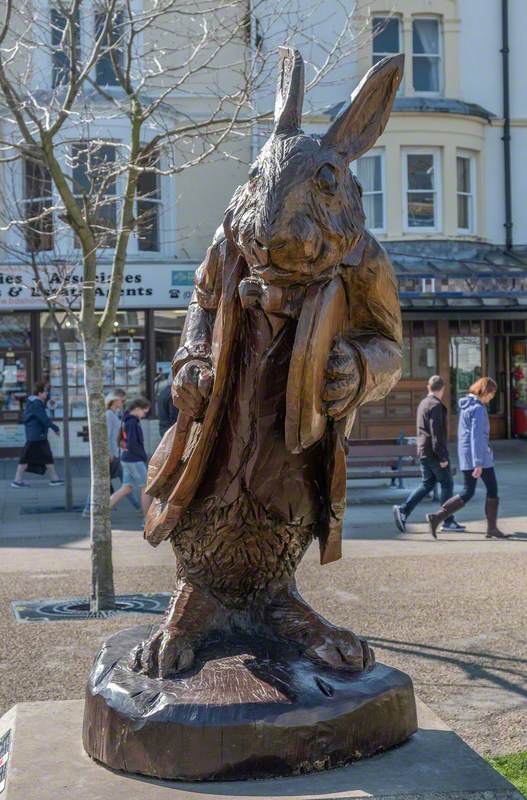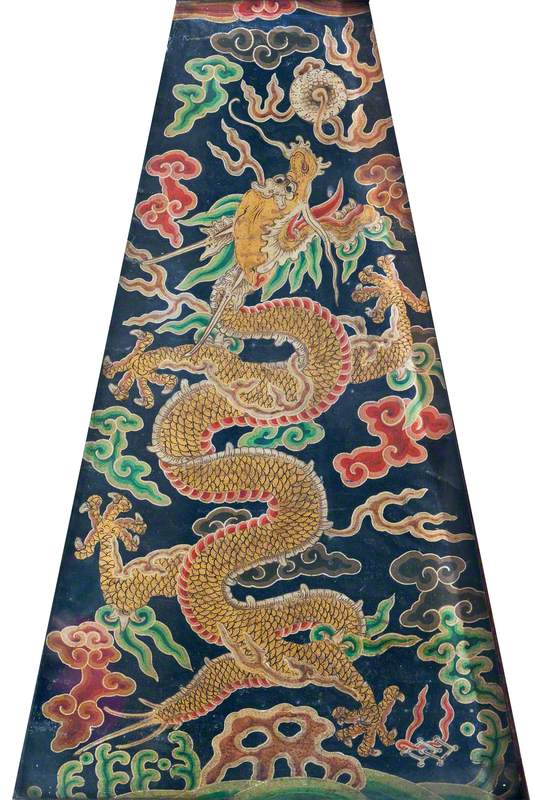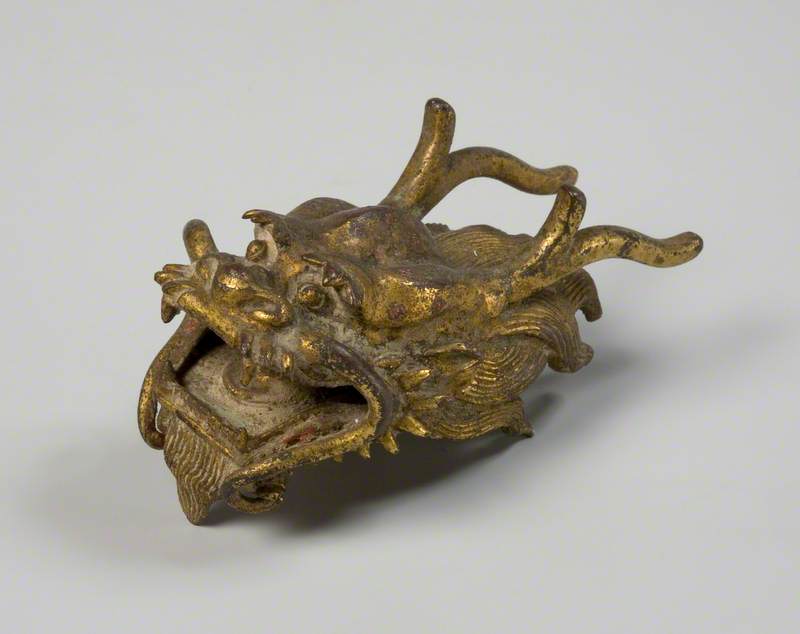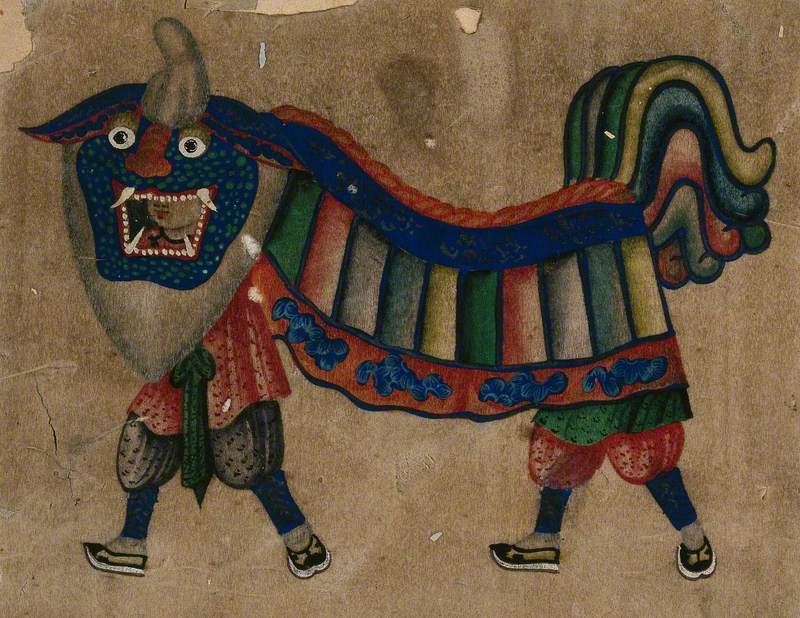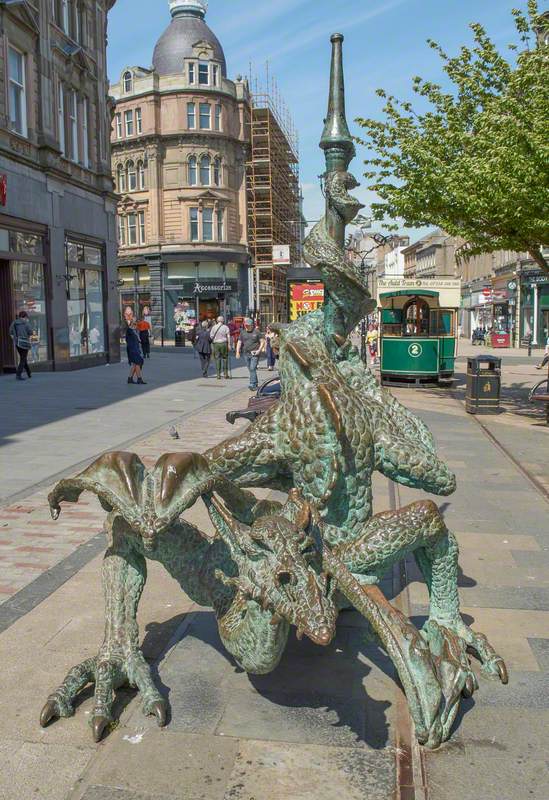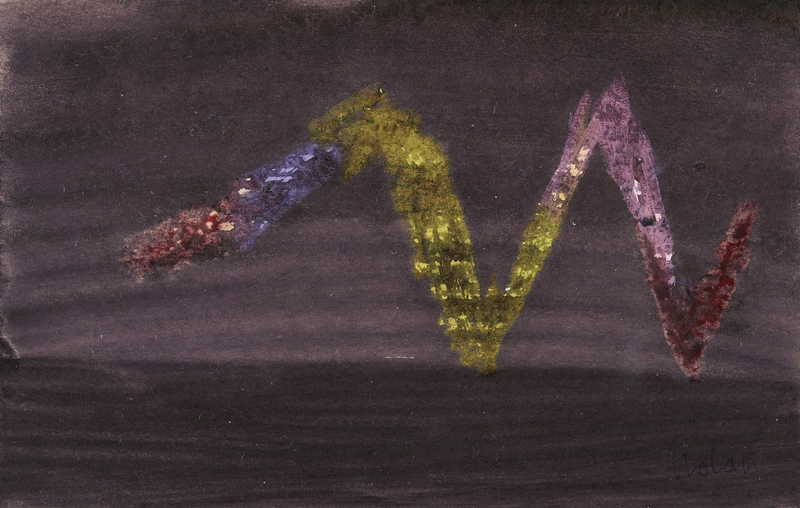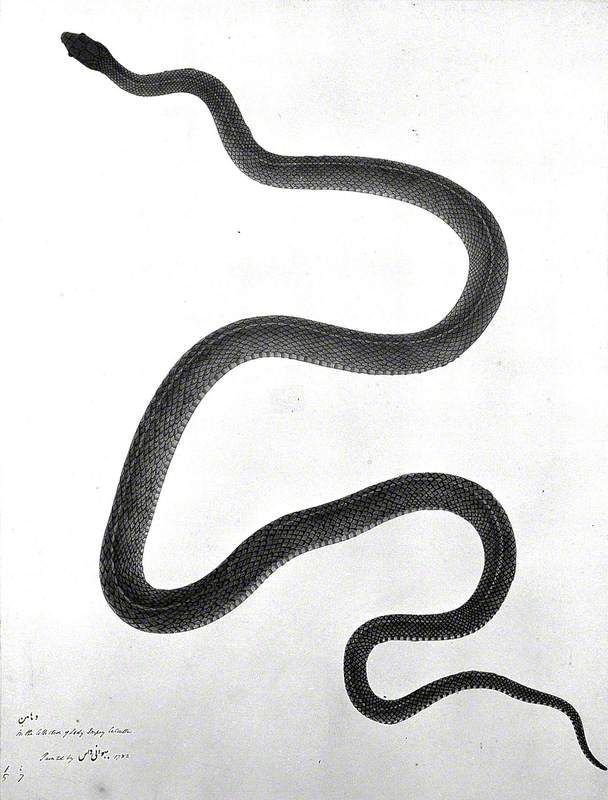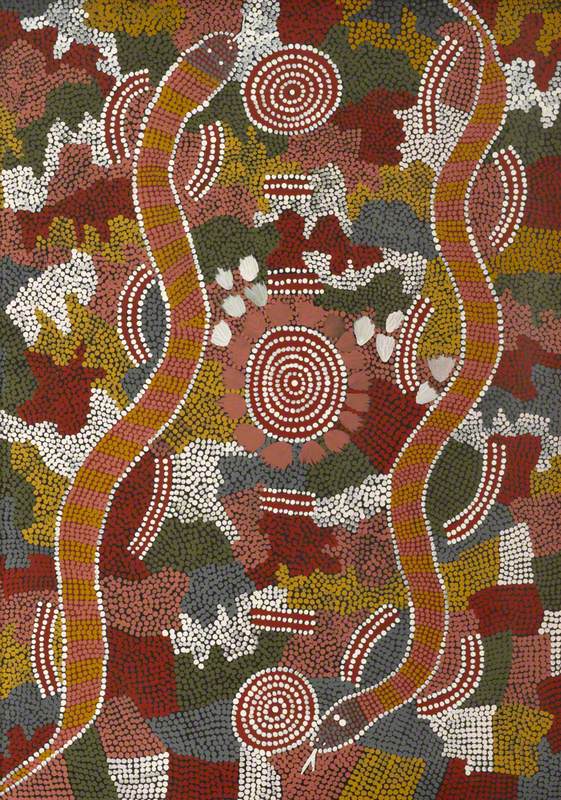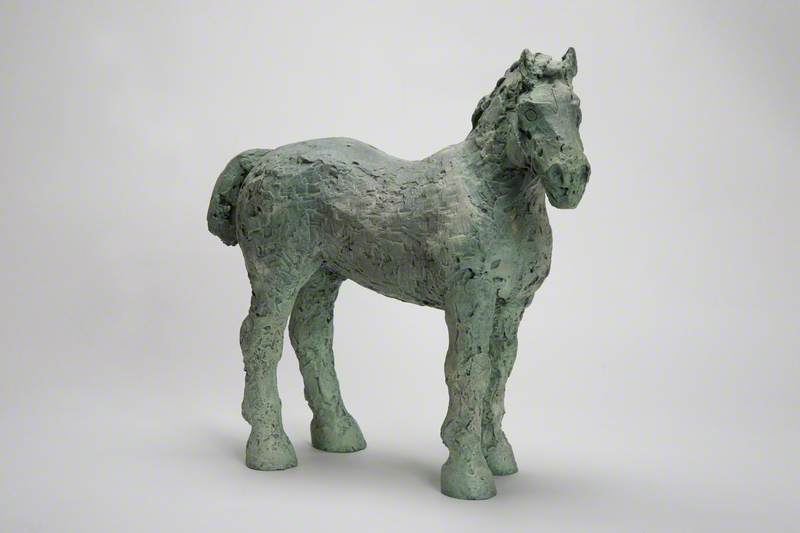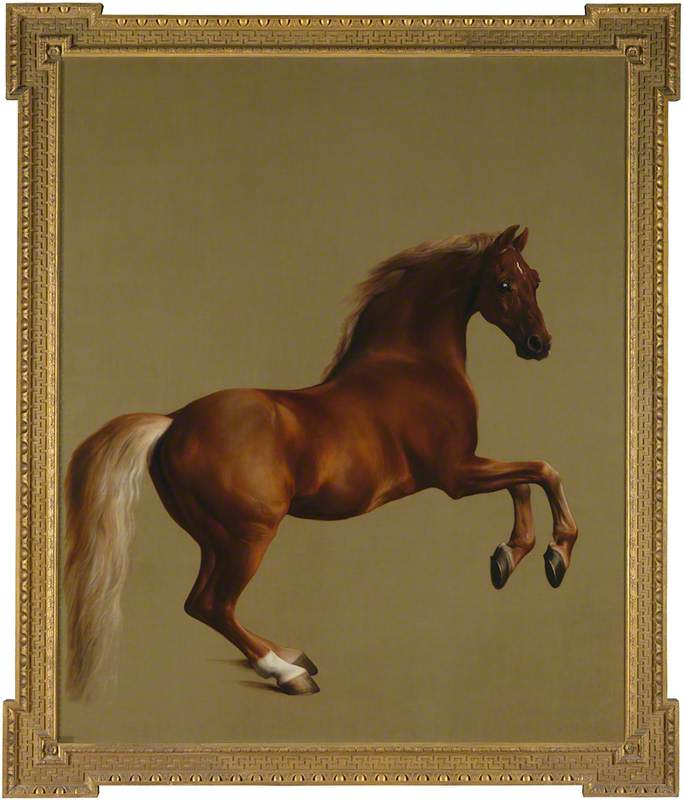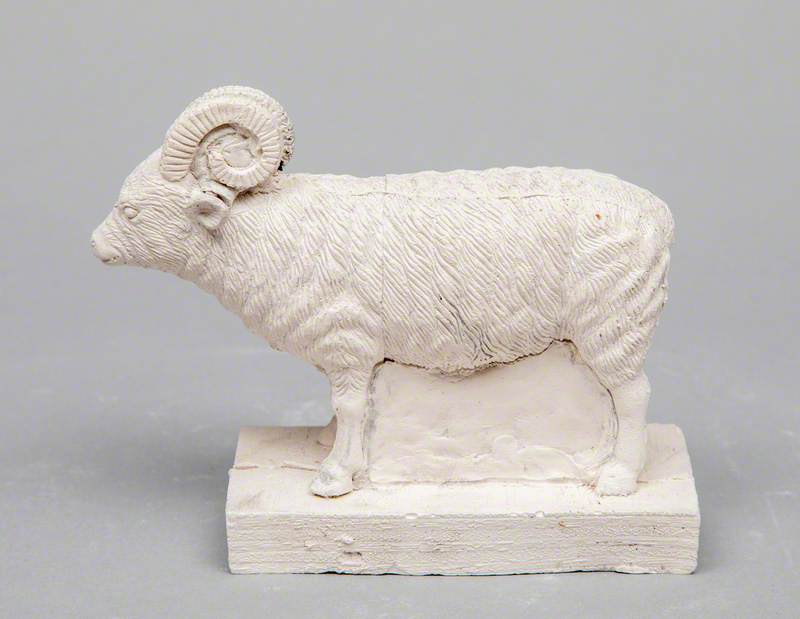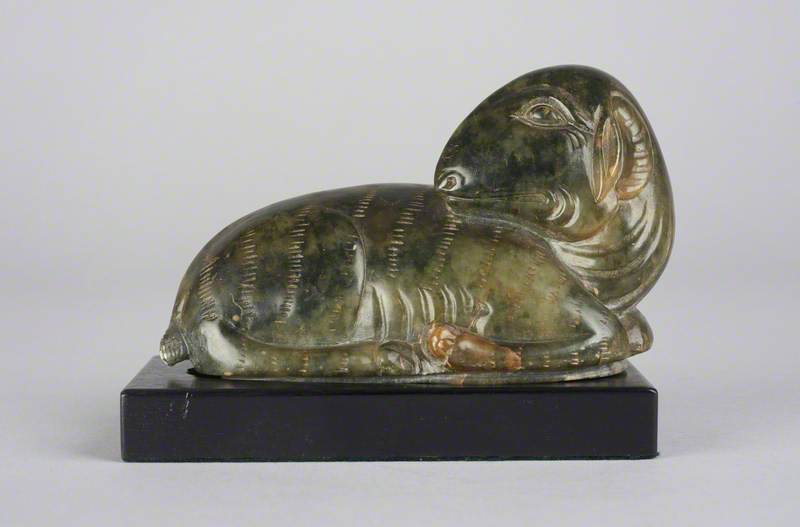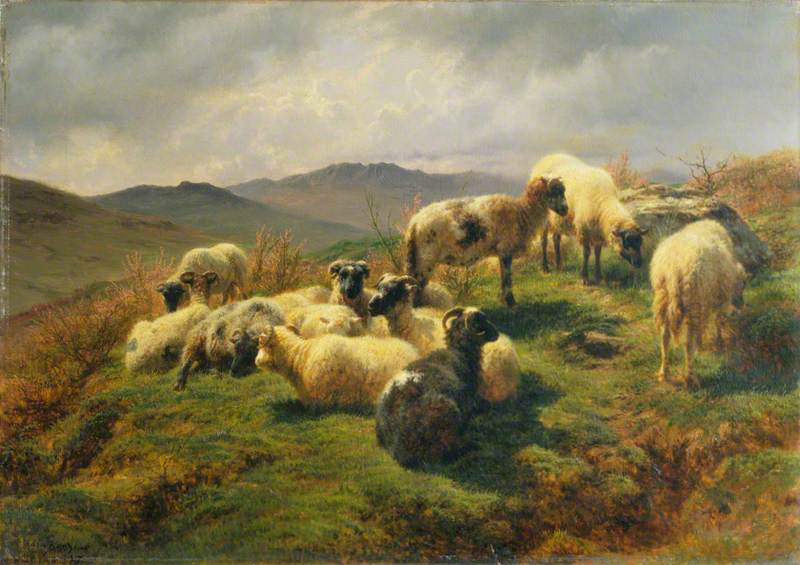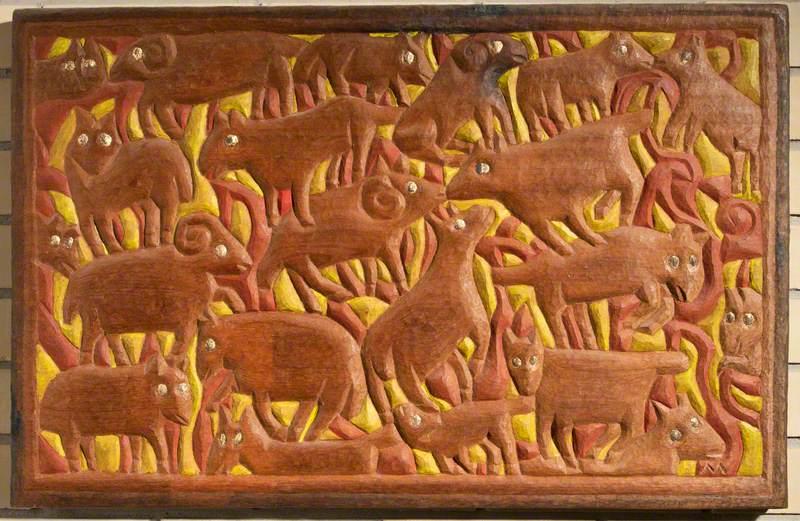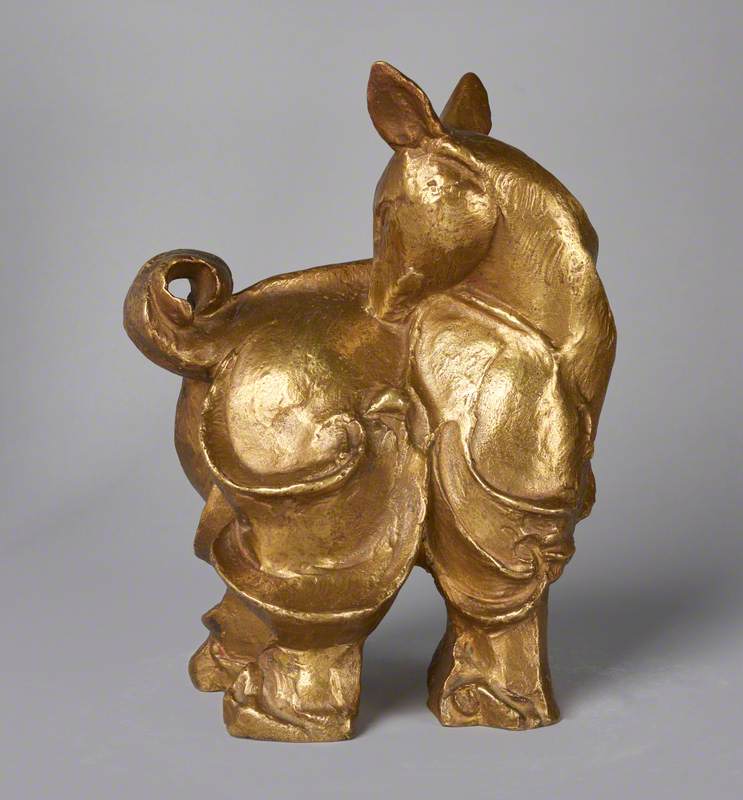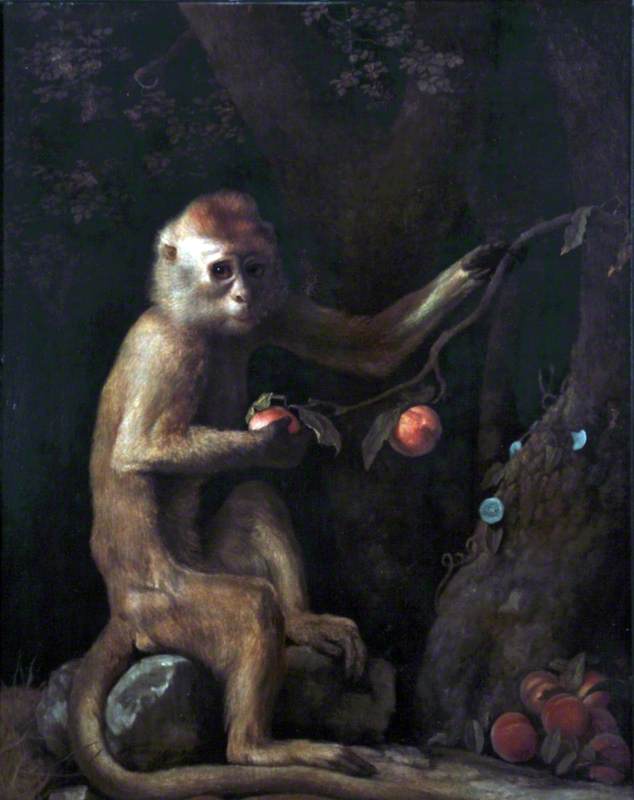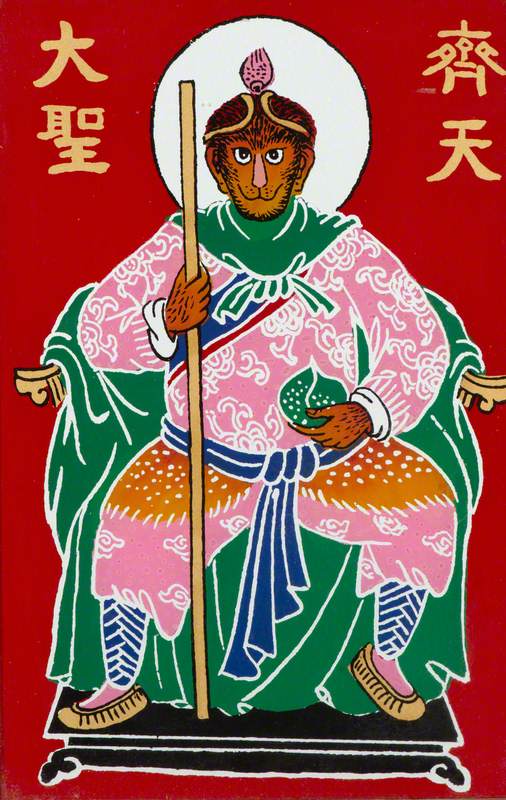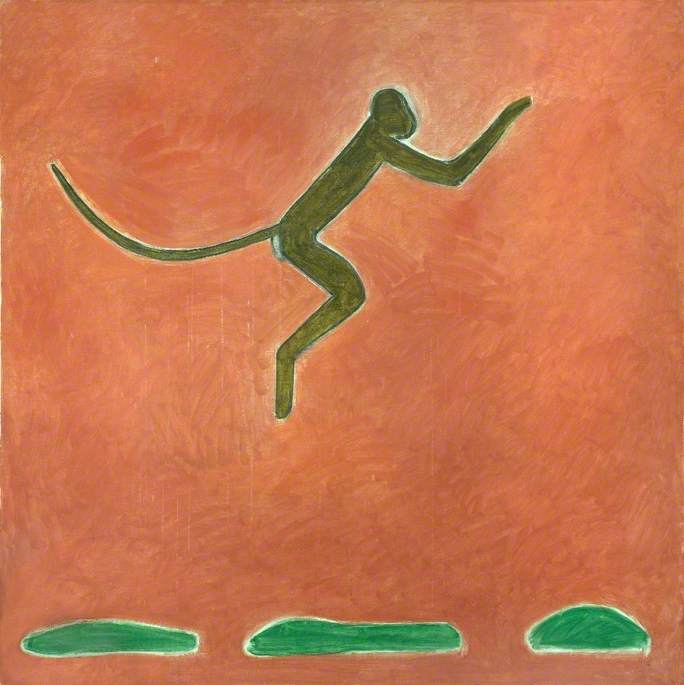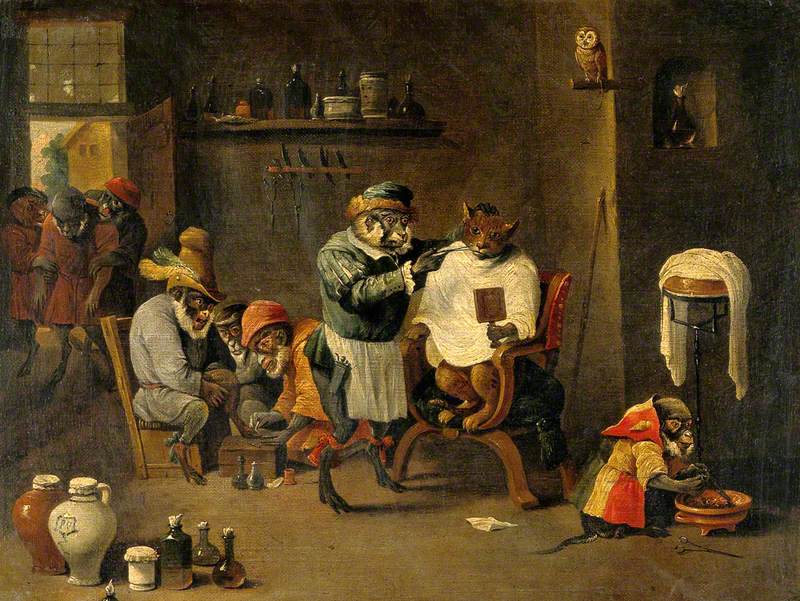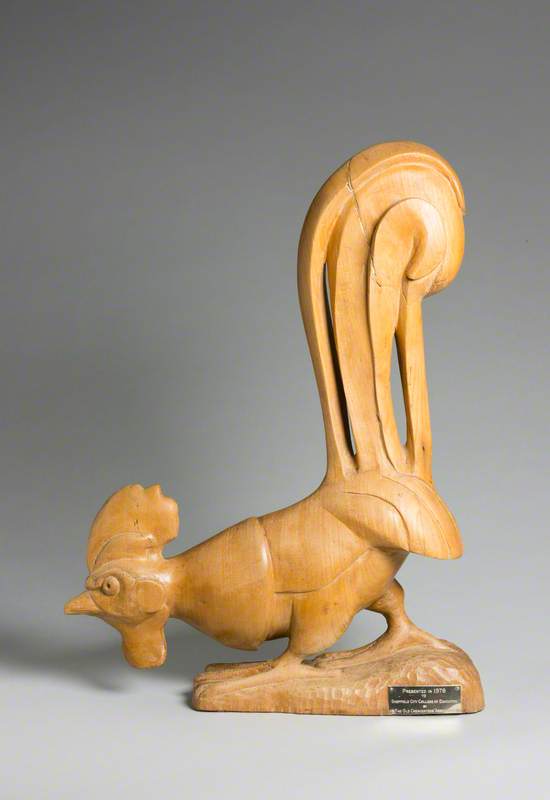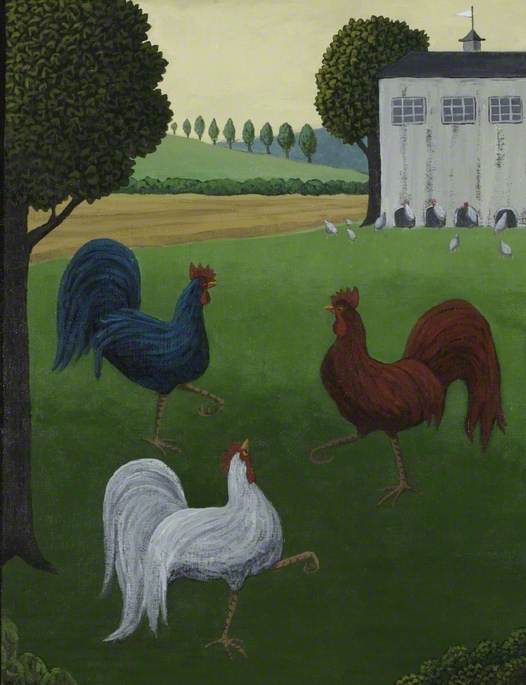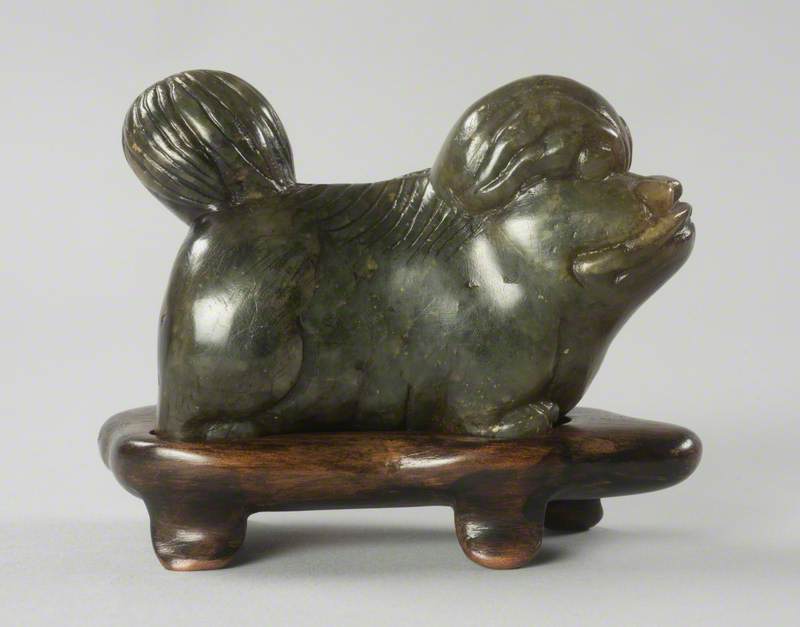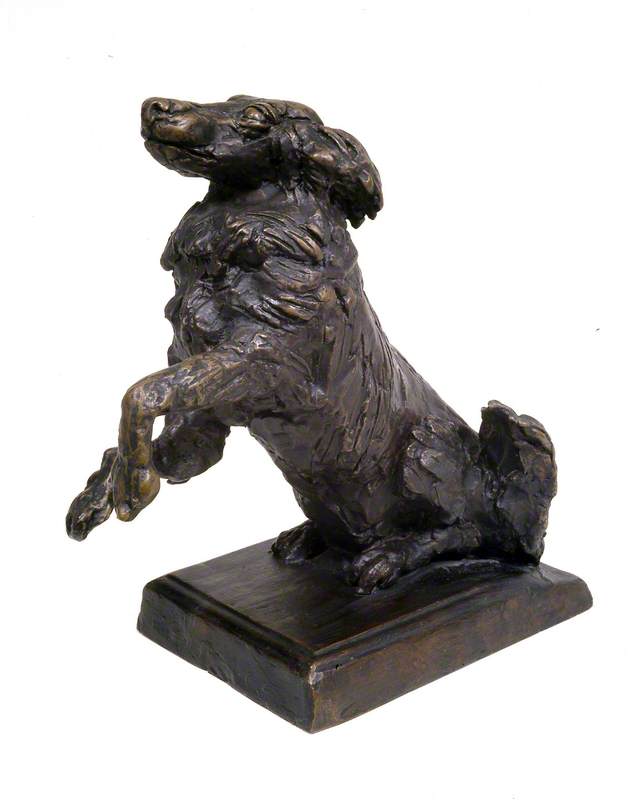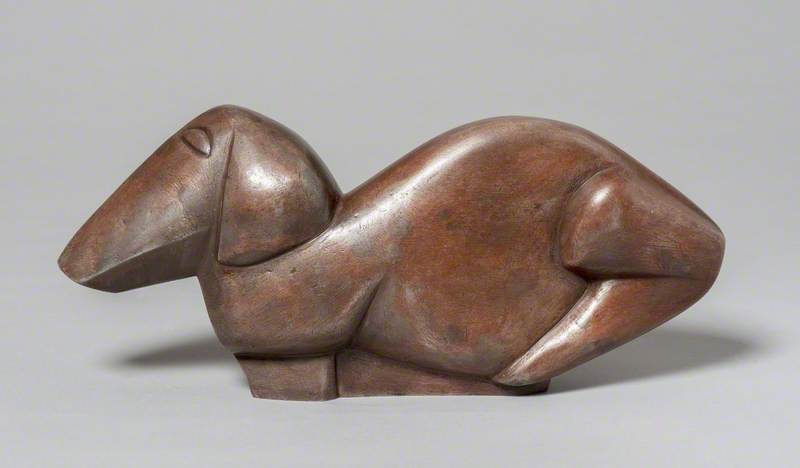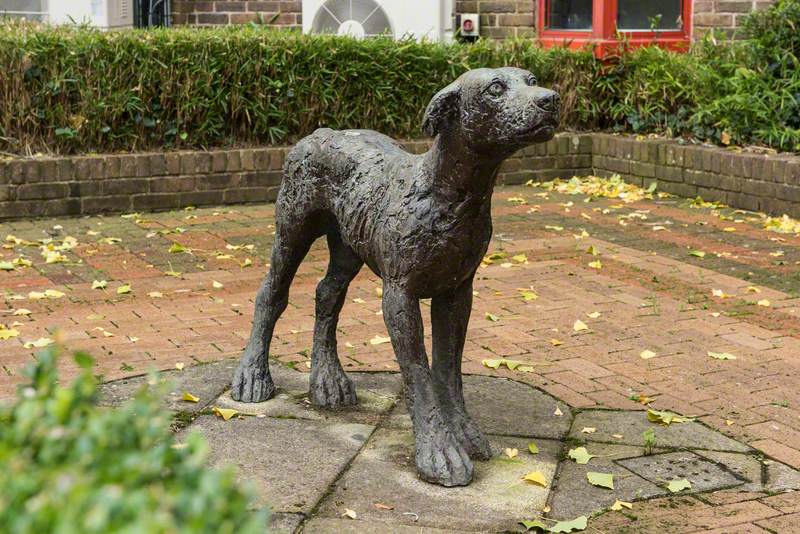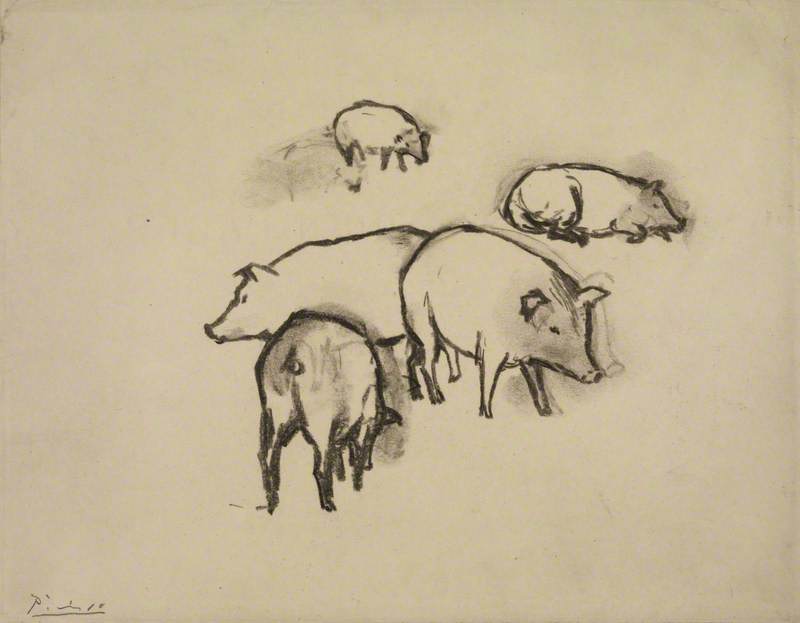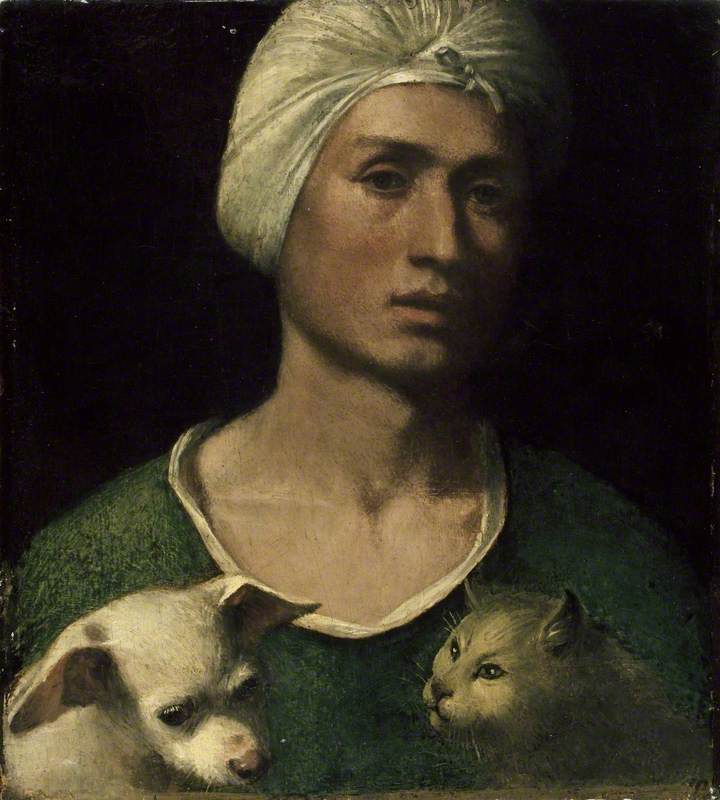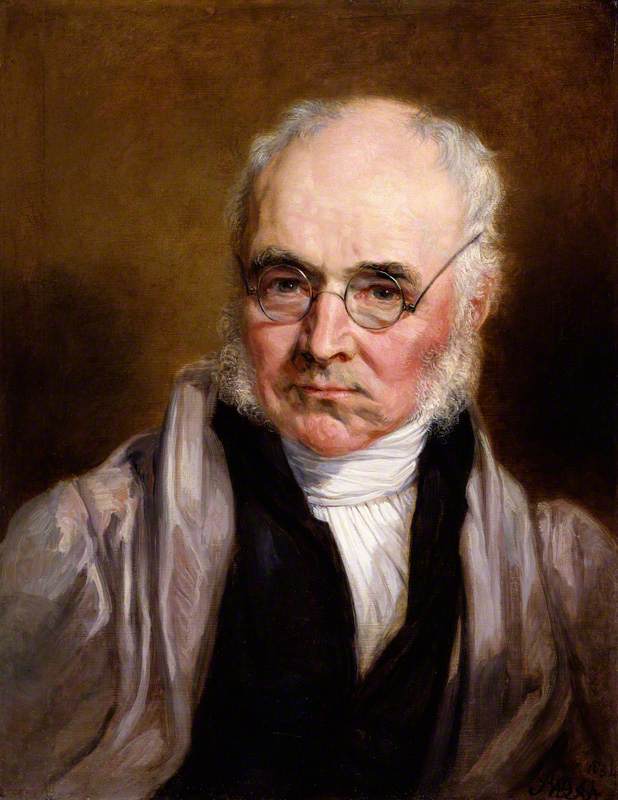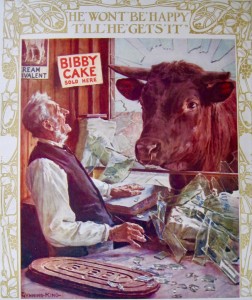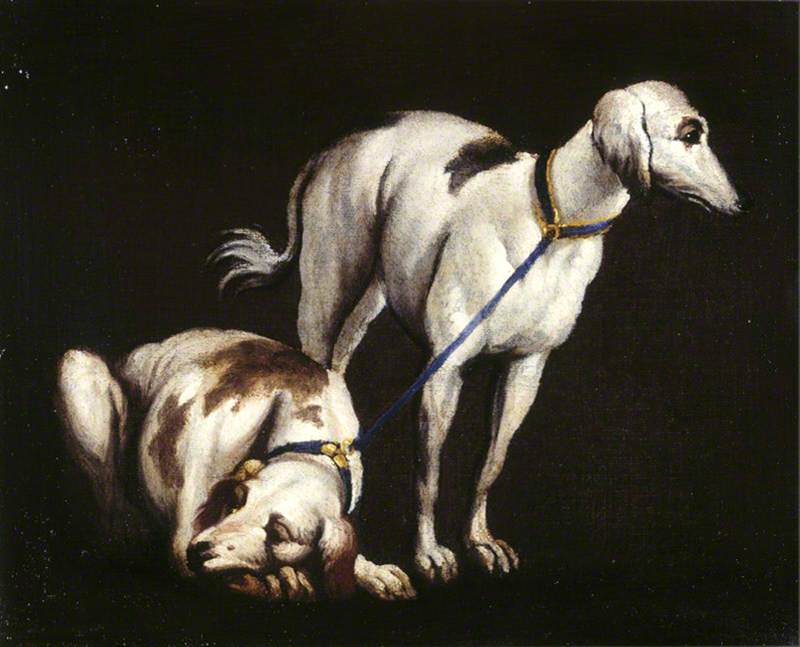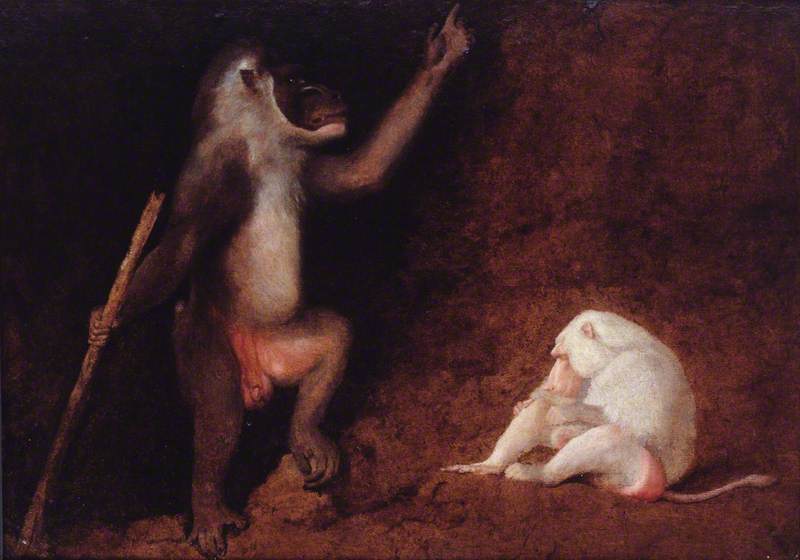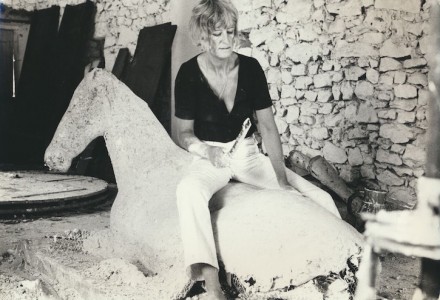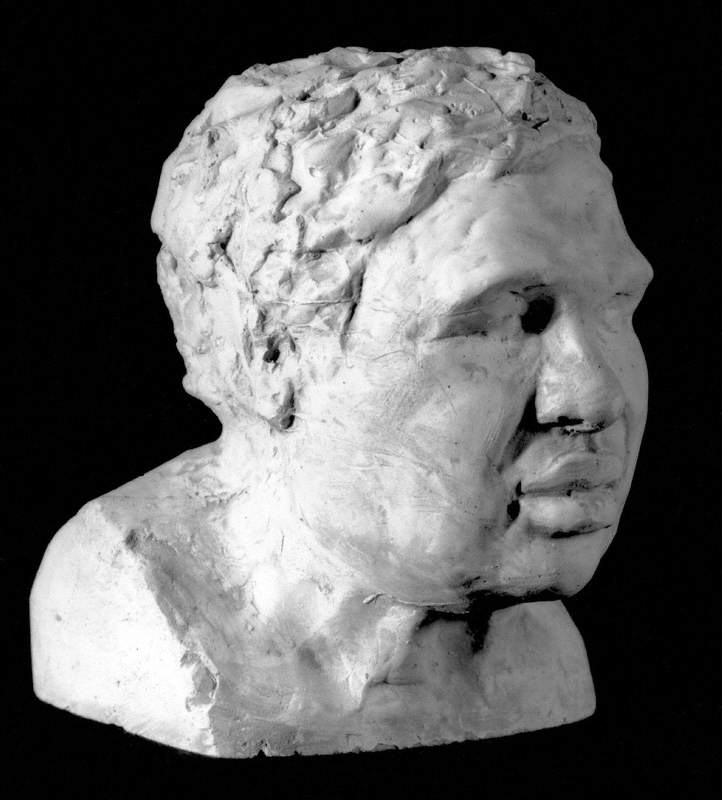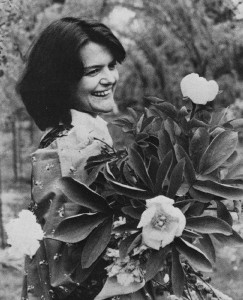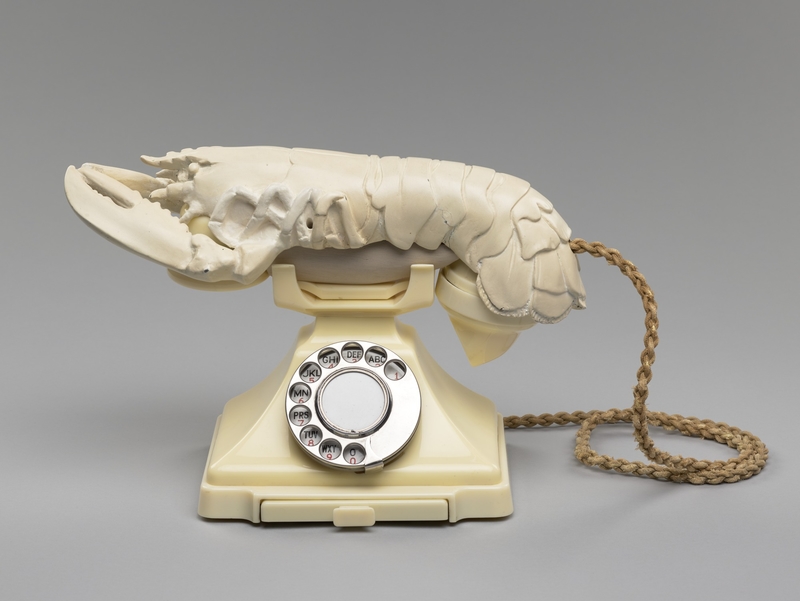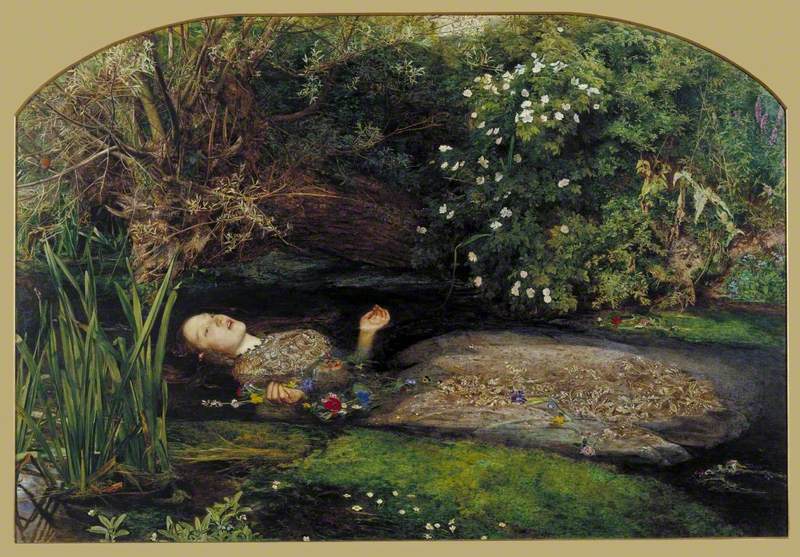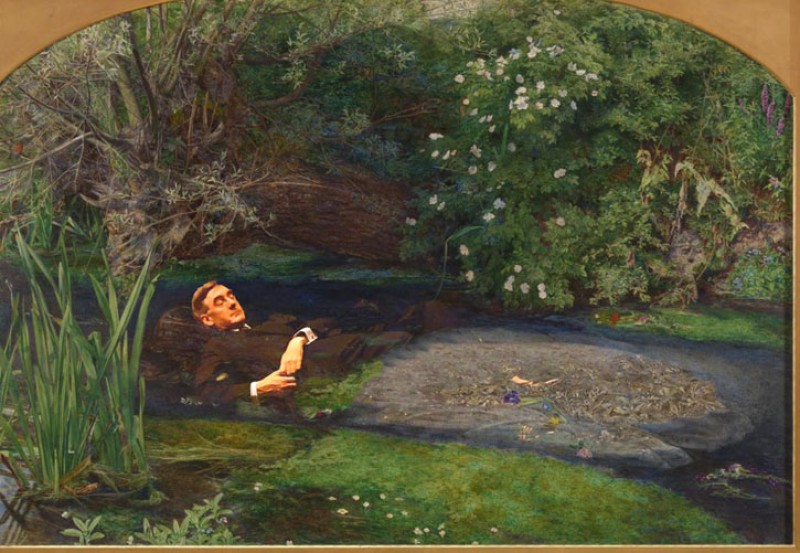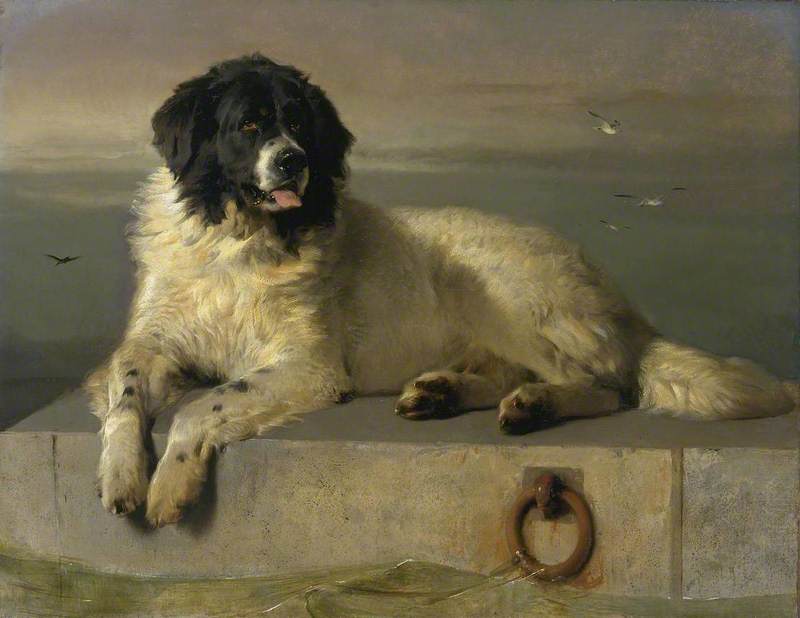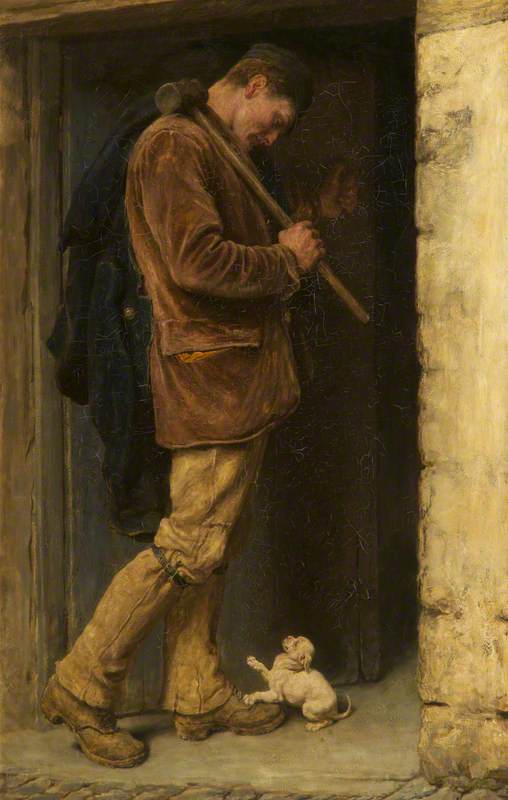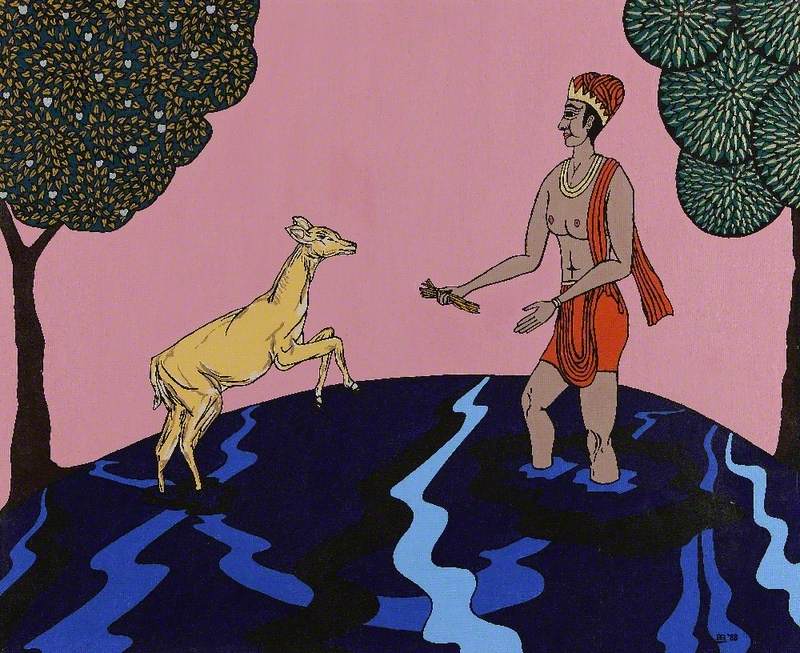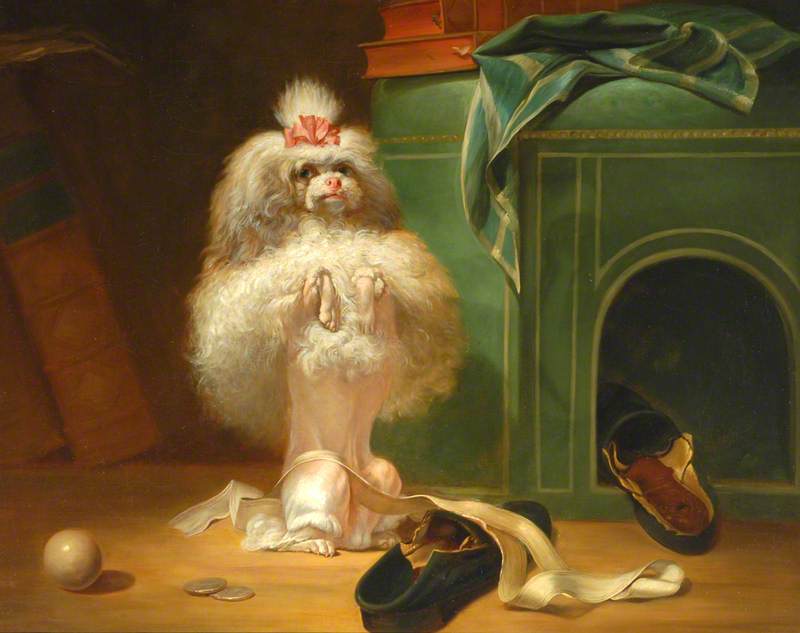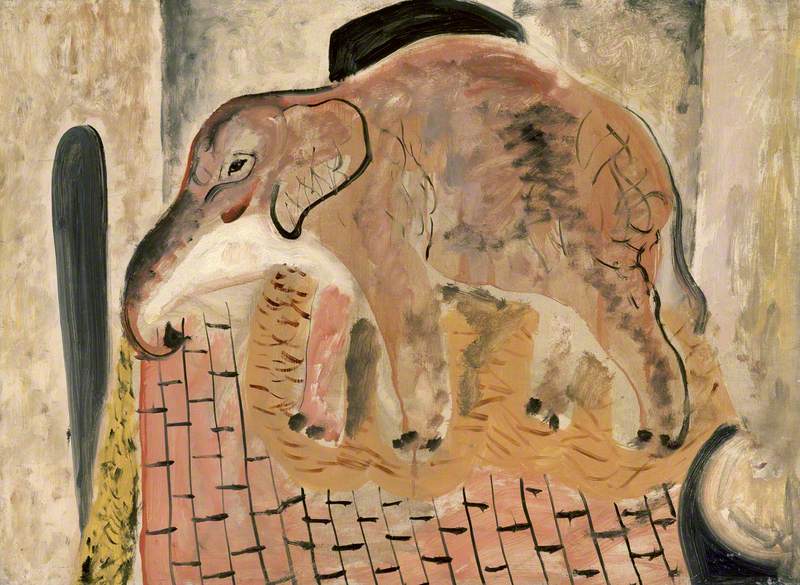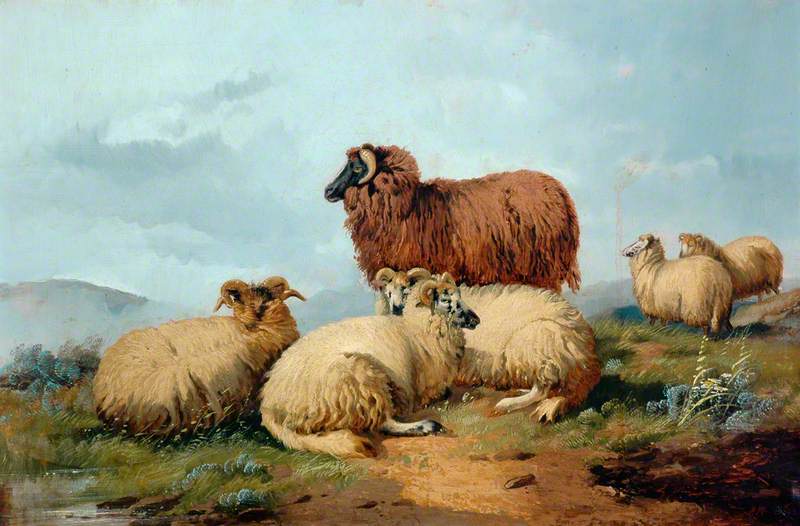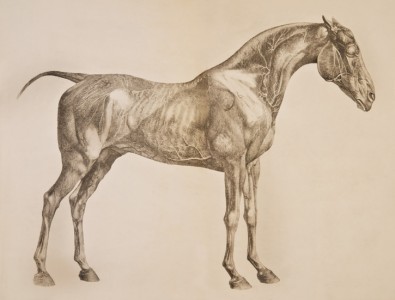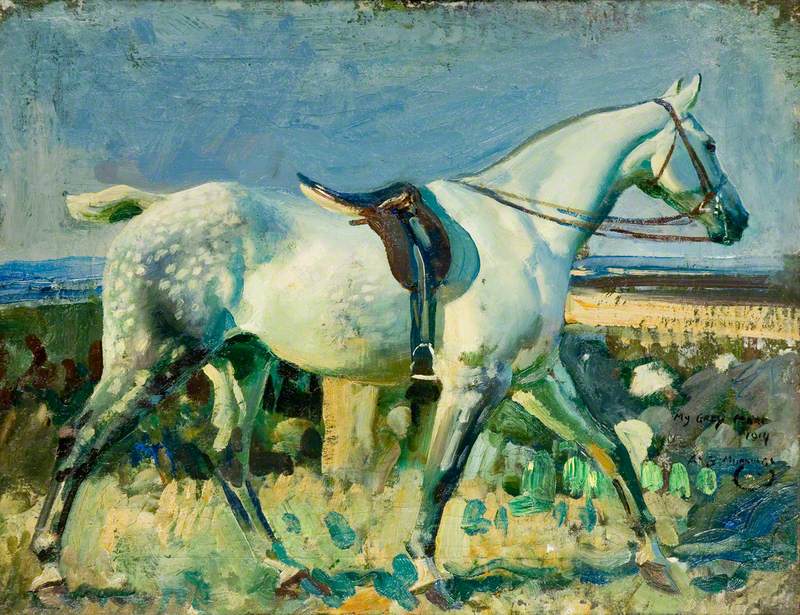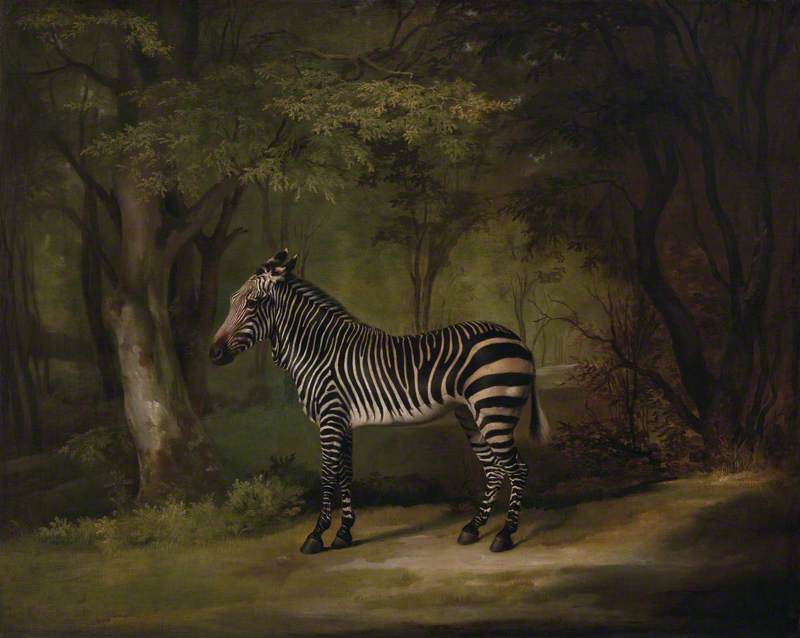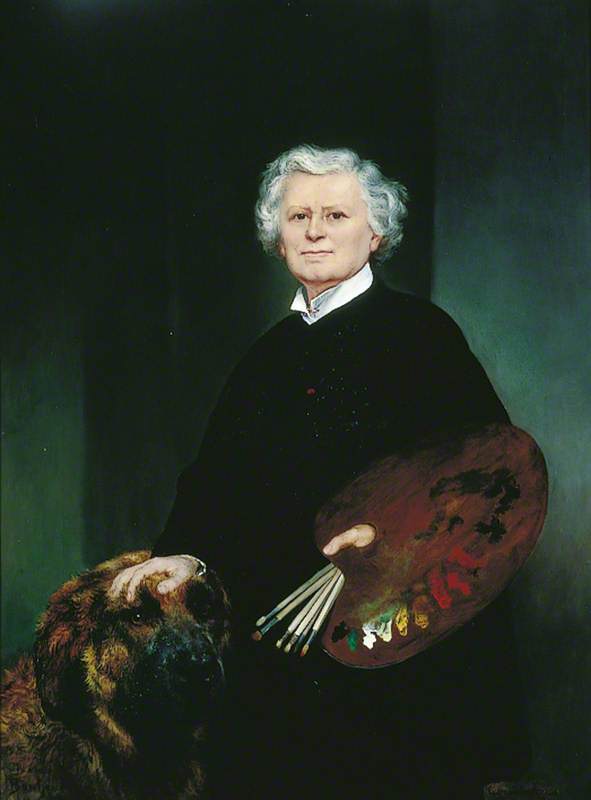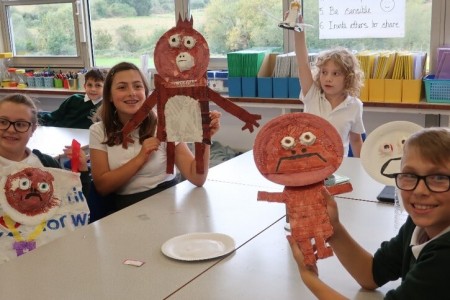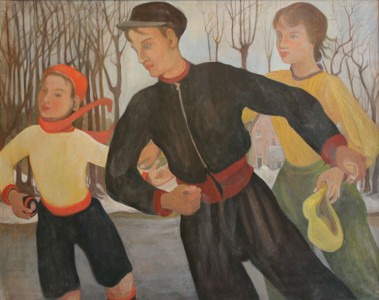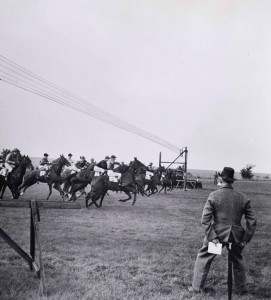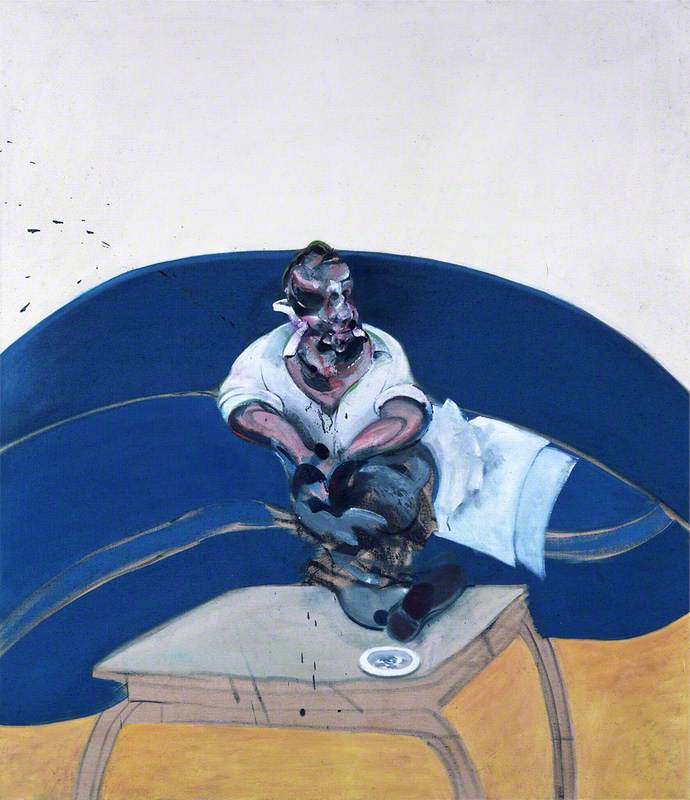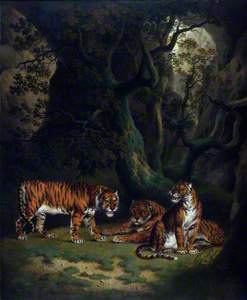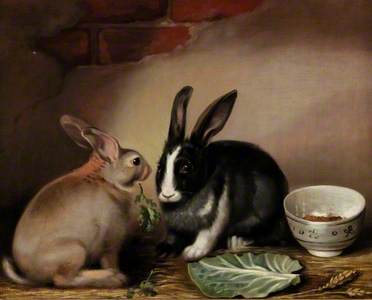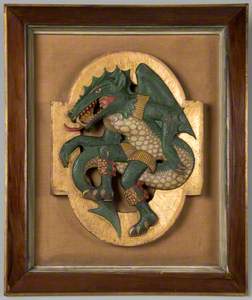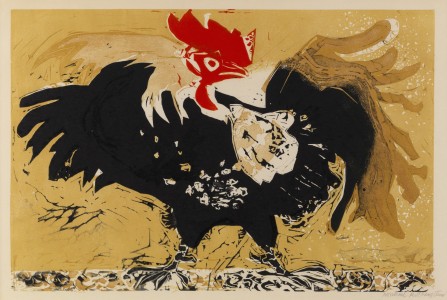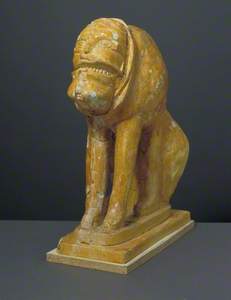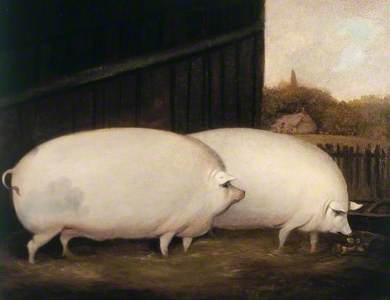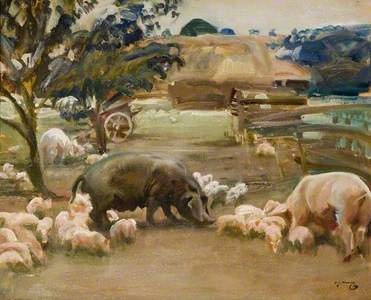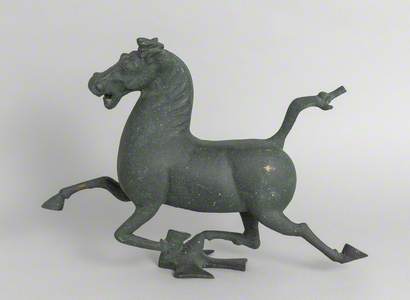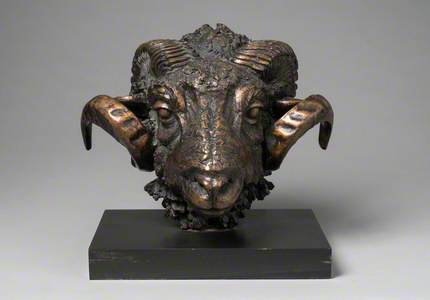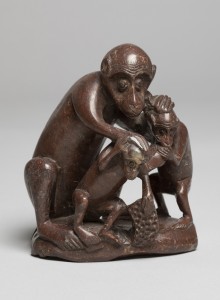Every year, millions of people across the world gather with family and friends to celebrate the Lunar New Year (sometimes known as Chinese New Year). In Chinese tradition, each year is designated one of twelve animals – this is known in the west as the Chinese zodiac.
There are various legends that explain how this ancient tradition came about. Perhaps the most famous is the 'Great Race', where the mythical Jade Emperor decided to name the years after the animals in the order they came to him. In order to do so, they had to cross a river. The rat hitched a ride on the ox, and thus became the first animal of the cycle.
Another story tells how the Buddha asked for visitors when before his departure from earth, but only twelve animals came. As a reward, the Buddha named the years after each animal as they came before him.
Here are the twelve animals as represented in UK art collections – in all sorts of ways and mediums!
1. Rat (born in 2020, 2008, 1996, 1984, 1972, 1960, 1948)
Perhaps unsurprisingly, in western art rats are usually represented as vermin, as they have been associated with carrying disease.
They are shown as creatures to be caught and killed – and in this desperate case, depicting the food shortages during the siege of Paris, even eaten!
2. Ox (born in 2021, 2009, 1997, 1985, 1973, 1961, 1949)
In the west, the ox is usually thought of in the same breath as farming – ploughing the soil with a team of oxen. This rather square example is typical of how livestock was once painted – you can read more about rectangular cows in this story.
Artists have depicted how two oxen may be yoked together, such as this twentieth-century example by Mary Fedden.
Fun fact: the name 'Oxford' means the same as 'Bosphorus'!
Oxen have been domesticated for millennia, being used as a draft animal as far back as ancient Egypt.
Egyptian Agriculture: Two Oxen and an Egyptian Man Holding a Bucket and Broadcasting Seeds
1951
Ralph Stephenson Lavers (1907–1969) 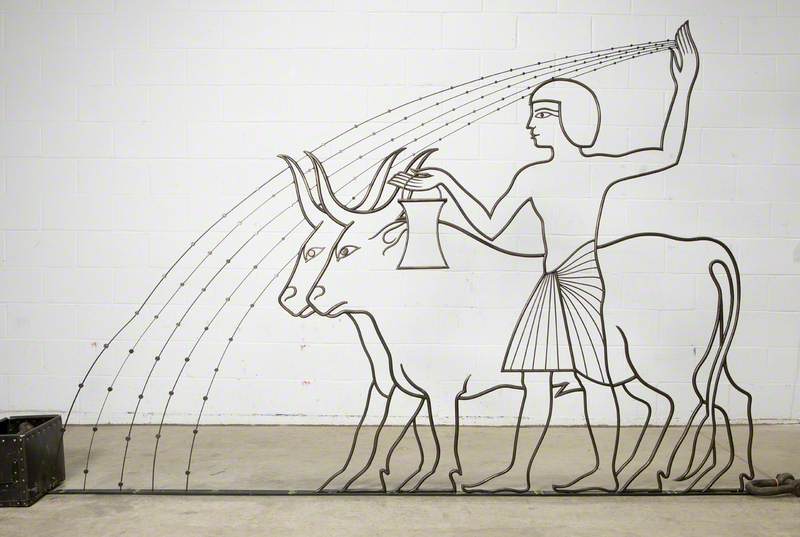
3. Tiger (born in 2010, 1998, 1986, 1974, 1962, 1950)
The majestic tiger has long captured the gaze of artists. This trio of tigers by the magnificently named Julius Caesar Ibbetson feels slightly posed, though – demonstrating a large helping of artistic licence.
Today, many tiger species are endangered, and looking back at artworks with 'tiger' in the title, it's striking how many of the older works are of hunting tigers, rather than celebrating their beauty.
Thankfully conservation work by zoos and charities is now more commonplace, but there's always more to be done to save tigers from extinction.
This local protector deity may have been absorbed into the Buddhist faith – he protects the Buddhist teachings but can also safeguard from disease and negative influences.
And let's not forget one of the nation's best-loved works, Henri Rousseau's Surprised!, in the collection of The National Gallery.
4. Rabbit (born in 2011, 1999, 1987, 1975, 1963, 1951)
Unlike tigers, rabbits are cute and fluffy (unless in a Monty Python film).
There are loads of examples of bunnies on Art UK. It's almost like they've been breeding. You can read more about rabbits in this story.
5. Dragon (born in 2012, 2000, 1988, 1976, 1964, 1952)
Dragons are a popular choice for artists – they feature in many myths and legends, as well as tales of saints (Saint George, Saint Michael, etc.).
Chinese dragons are often portrayed quite differently, as positive forces and not antagonists of the story.
Many of us will have seen parades with Chinese dragons dancing around, as in this work from the mid-nineteenth century.
Rather than show you the gruesome slaying of dragons, here's one that's enjoying a folk dance – it seems to have Morris dancing bells on its legs!
And if you're in Dundee, watch out for this beast...
6. Snake (born in 2013, 2001, 1989, 1977, 1965, 1953)
Again, snakes in the west get a bad deal – tied up with notions of Adam and Eve and Original Sin. But their beauty can be bewitching, as in this stunningly coloured representation by the prolific artist of the natural world, Marianne North.
Flor Imperiale, Coral Snake and Spider, Brazil
c.1873
Marianne North (1830–1890) 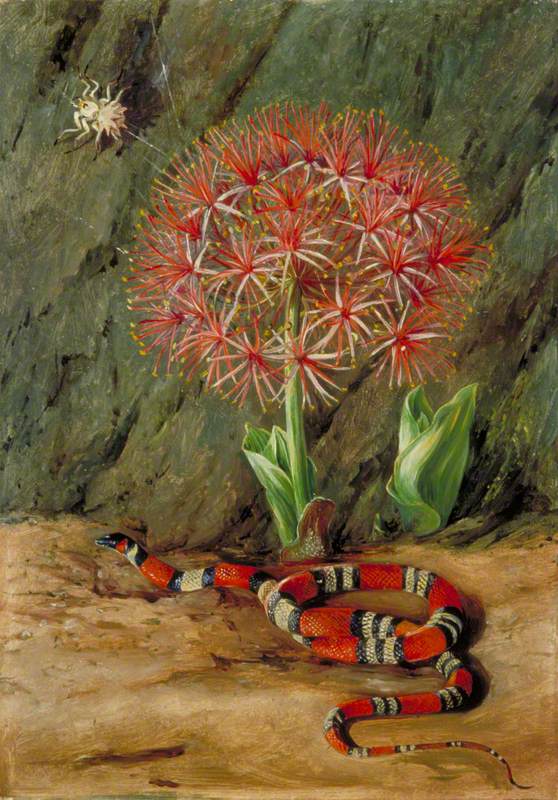
The outward simplicity of a snake's anatomy has suggested playing around with lines, as in this Sidney Nolan piece.
By contrast, this watercolour by Bhawani Das is one of a collection of over 300 natural history illustrations commissioned in Calcutta between 1777 and 1783, by Lady Mary Impey and her husband Sir Elijah Impey, Chief Justice of Bengal. The works provided an accurate record of many newly identified species.
Cultures in other parts of the world also include snakes in their myths and legends. This is a painting by Aboriginal Australian artist Dinny Nolan Tjampitjinpa.
7. Horse (born in 2014, 2002, 1990, 1978, 1966, 1954)
Horses are frequently depicted in western art, whether as a knight's steed, a farm animal or a racehorse. This sculpture by Elisabeth Frink drew on both Chinese portrayals of horses and also the cave paintings at Lascaux.
Here's one of the most famous horses in art – Whistlejacket in The National Gallery, painted by George Stubbs, one of the greatest of all animal painters.
8. Goat, sheep or ram (born in 2015, 2003, 1991, 1979, 1967, 1955)
There is a surprisingly large number of artworks featuring sheep, goats and rams on Art UK – possibly one artist started the trend and then everyone else followed...
This ram by Eduardo Paolozzi is in the collection of Maggie's London.
This carved steatite sheep is actually Chinese in origin. The Chinese word used in the zodiac (yang, 羊) actually means both 'sheep' and 'goat'.
As well as sculpture, painters liked to paint a sheep or two. Here's a fabulous work by Rosa Bonheur – you can read more about her in this story.
But apart from rural idylls, mainly sheep and goats seem to crop up as delightful little fun things in art. Here's Mabel Pakenham-Walsh's Sheeps in Hell...
...and John Duncan Fergusson's cute wee golden goat.
But we couldn't leave the ovine section without a tribute to the GOAT of sheep, Aardman's Shaun the Sheep.
Wish Ewe Were Here (Shaun the Sheep)
2015 or later
Josh Williams and Aimee Williams 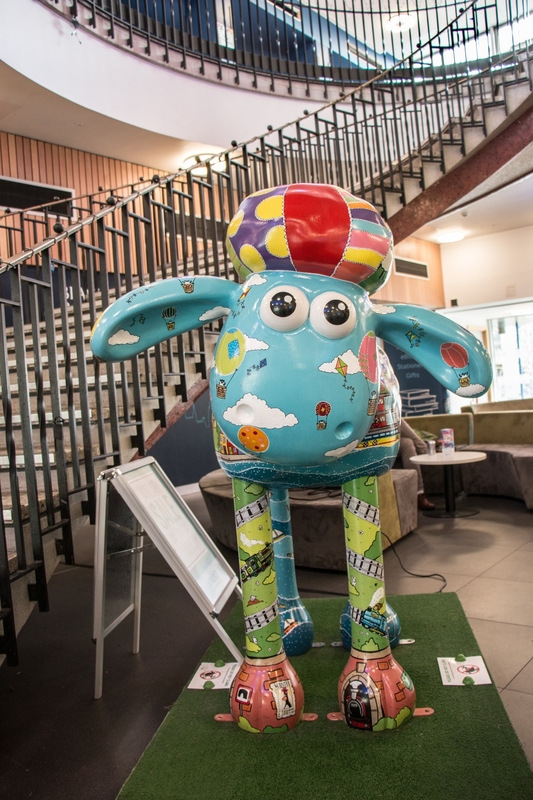
9. Monkey (born in 2016, 2004, 1992, 1980, 1968, 1956)
Monkeys have featured in many works of art, sometimes as symbols, sometimes as satire. This fine simian looks as if he commissioned Stubbs for a portrait!
Fans of 1970s TV will perhaps remember Monkey, based on a sixteenth-century Chinese tale, Journey to the West. This painting from the Horniman is by an unknown artist from Hong Kong. It shows the Monkey King, Sun Wukong, a key character in the novel (and series).
Sometimes what's required to get the sense of an animal is a few simple lines. This silhouette gives an excellent impression of a monkey in full jump.
Possibly the weirdest part of this list is the next painting, showing monkeys at a barber-surgeon's. But it's not that uncommon! This is an example of a genre known as singerie, where monkeys replaced humans in the artwork, often with a satirical edge.
10. Rooster (born in 2017, 2005, 1993, 1981, 1969, 1957)
Roosters (or cockerels) seem to have the reputation of being a bit pompous in western tradition. This can be found all the way back in the medieval tales of Chanticleer and the fox, where the cunning fox outwits the rooster.
The strutting roosters seem to own the place in this painting.
Even close up, roosters can be portrayed as perhaps proud and preening.
This close-up linocut gives a sense of the quick motion chickens tend to use when something unexpected is happening...
11. Dog (born in 2018, 2006, 1994, 1982, 1970, 1958)
Dogs... humans' best friends? Certainly they can claim to be one of the oldest domesticated animals, and artists LOVED their pooches.
Whether it's Frisky, Jacob Epstein's mutt...
...or Gaudier-Brzeska's almost Cubist dachshund...
...or Frink's very traditionally dog-shaped dog, artists continue to bring to life a variety of breeds.
We wouldn't advocate taking the zodiac animal idea literally, but Paolozzi comes close by combining his features with a dog – he's a good boy, isn't he?
12. Pig (born in 2019, 2007, 1995, 1983, 1971, 1959)
Rounding off the zodiac, it's the porcine protagonists, the pigs... Here's a drawing by none other than Picasso. Or should that be Pig-casso?
You may have seen this painting doing the rounds on the internet, as it was featured in the baffling meme 'brother, may I have some oats'.
Alfred Munnings is best known for painting horses, but his traditional pig scene is a fine example of farmyard painting.
We couldn't delve into the vaults of livestock without mentioning the collection of the MERL (Museum of English Rural Life), now internet sensations thanks to their 'absolute unit' and 'chicken in trousers'. Here's a pig from their collection, which is incidentally available to buy on a range of print to order merchandise...
Prize Pig, Royal Agricultural Show, Cardiff
1872
Richard Whitford (c.1821–1890) 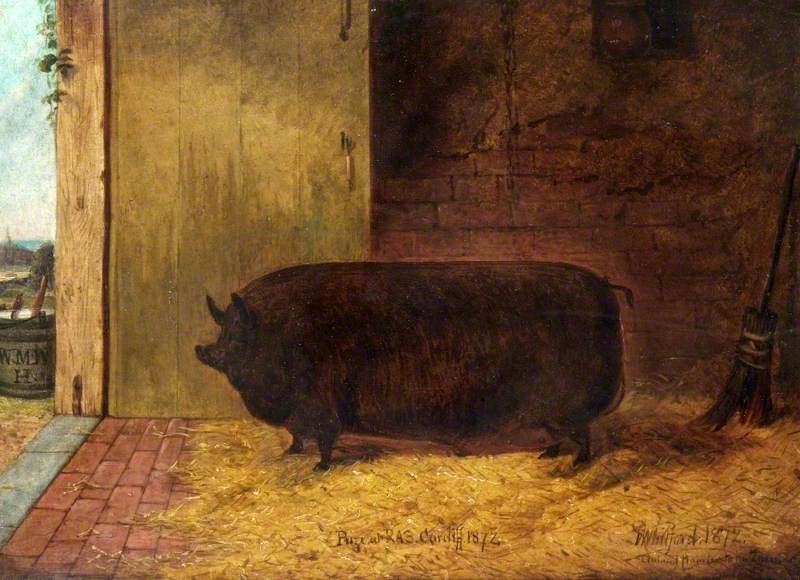
Whatever animal year you were born in, Happy Lunar New Year!
恭喜發財 – that's 'Gong Xi Fa Cai' in Mandarin or 'Gong Hei Fat Choy' in Cantonese...
Andrew Shore, Head of Content at Art UK
